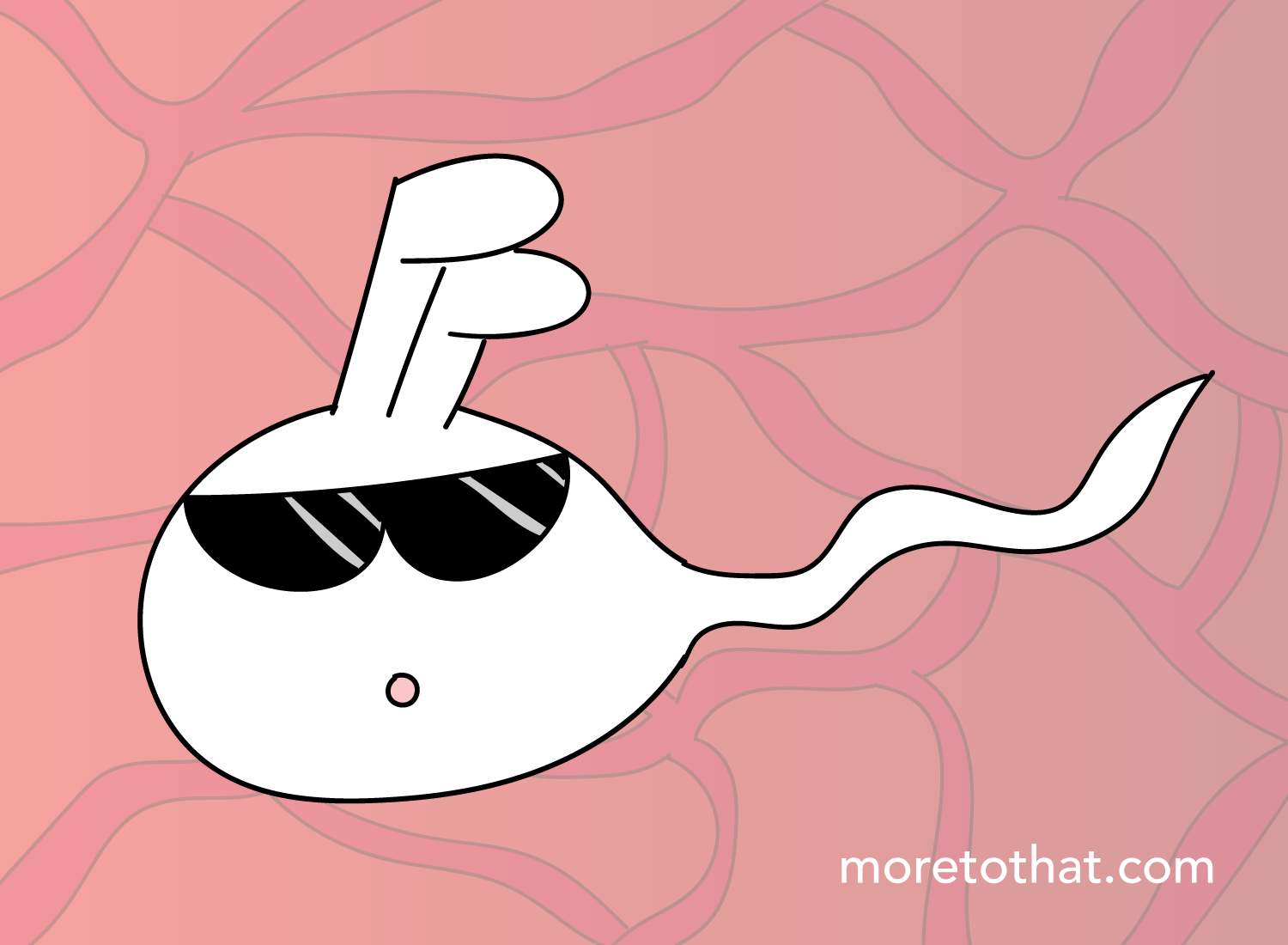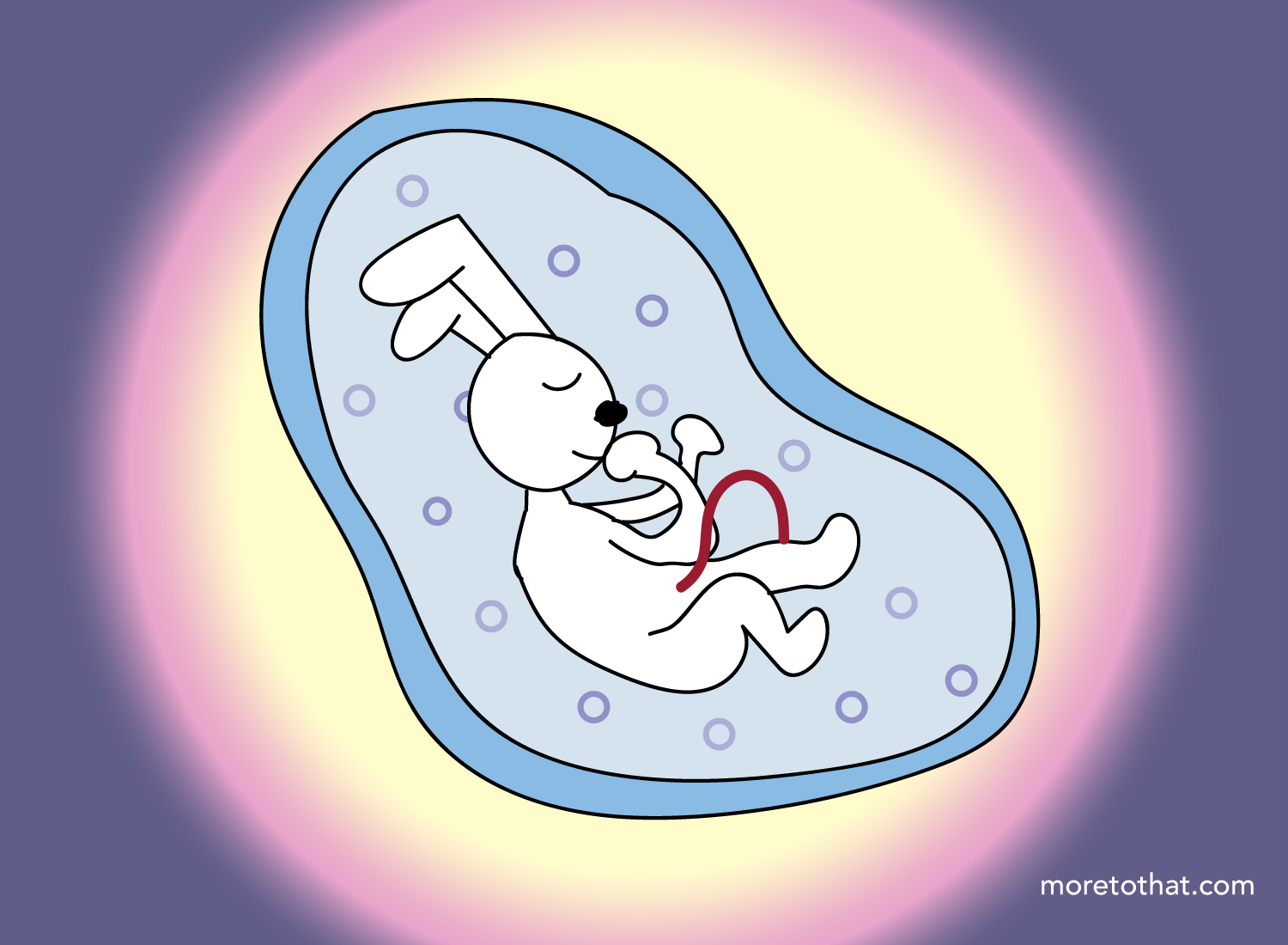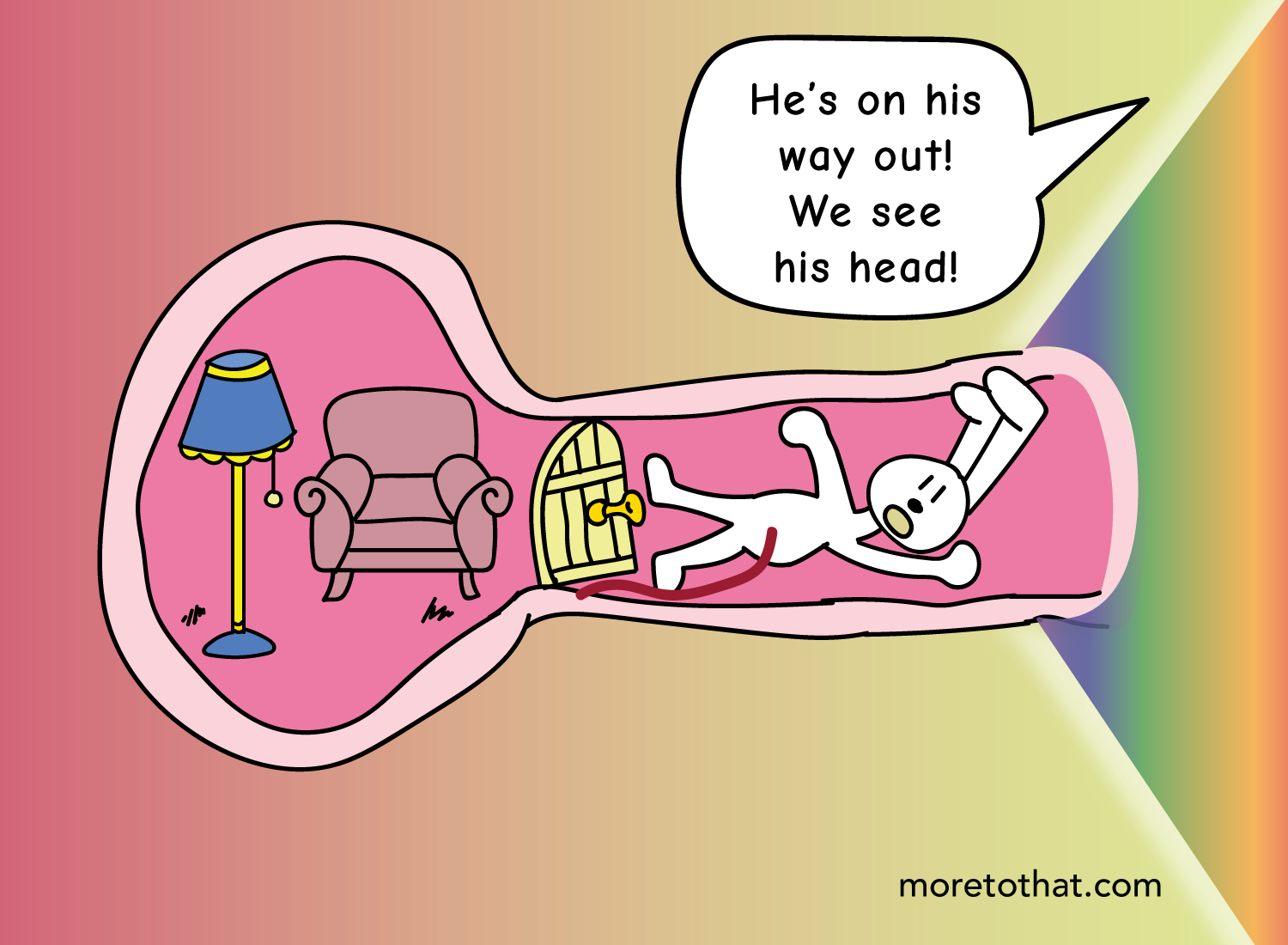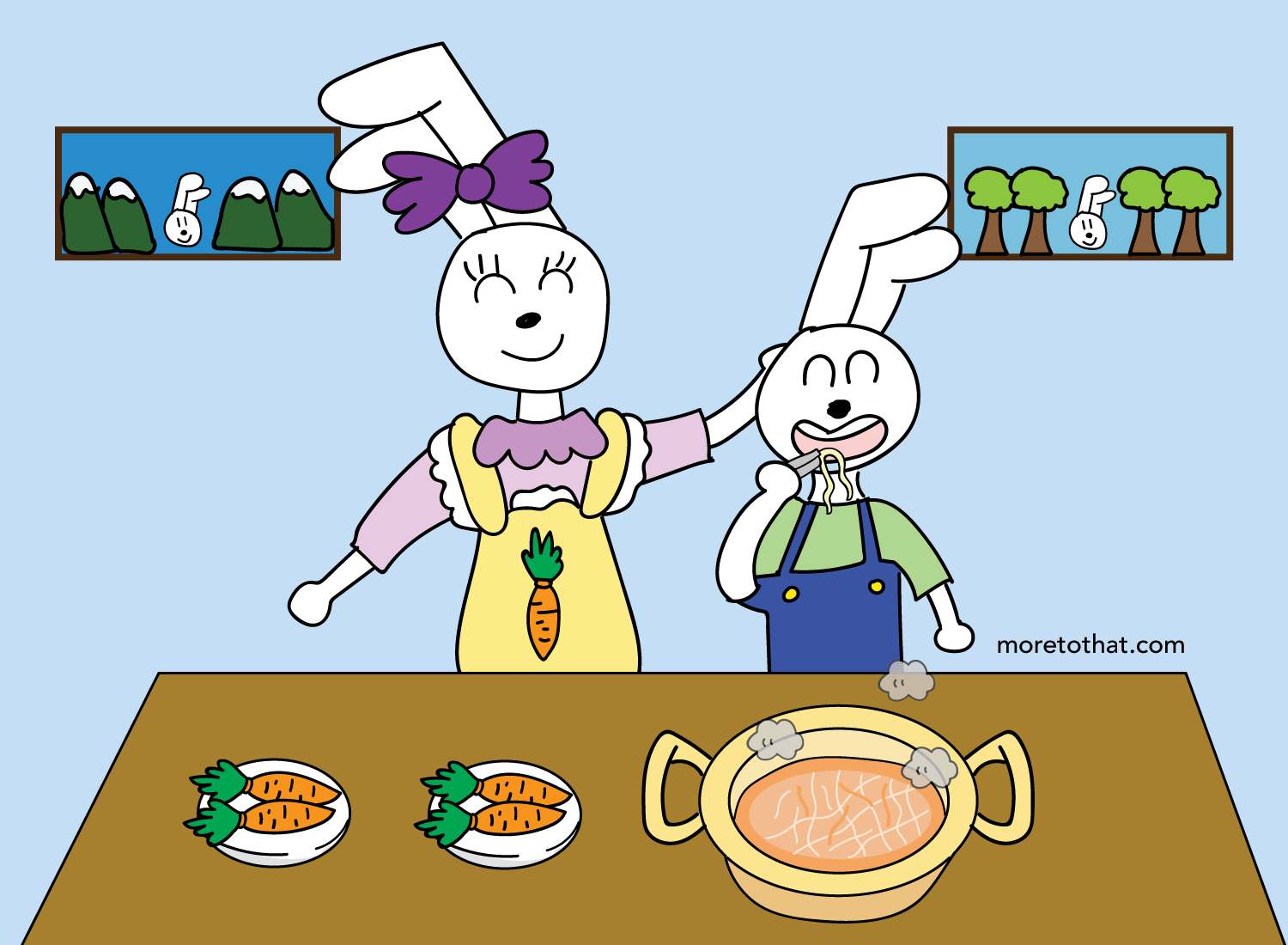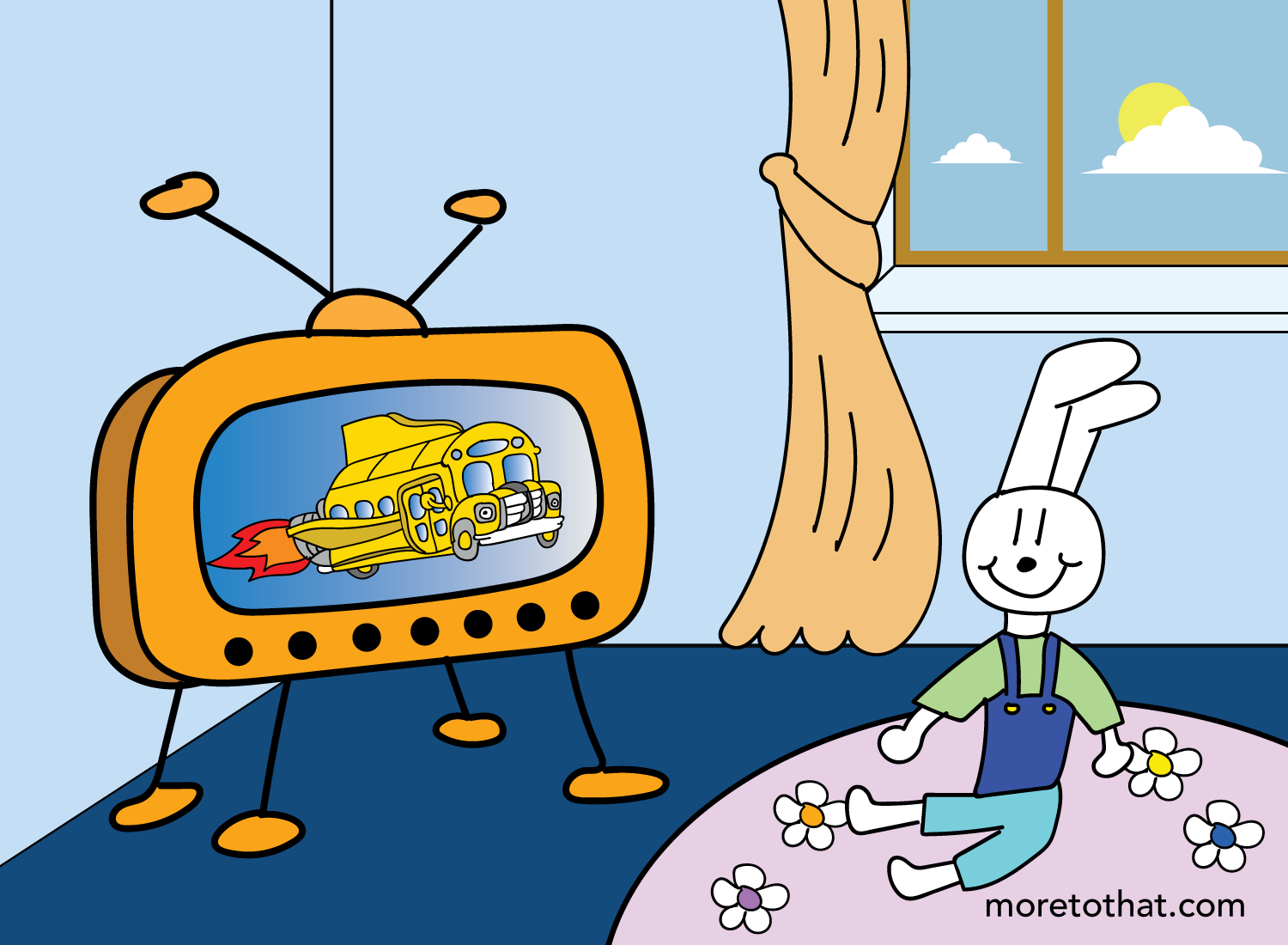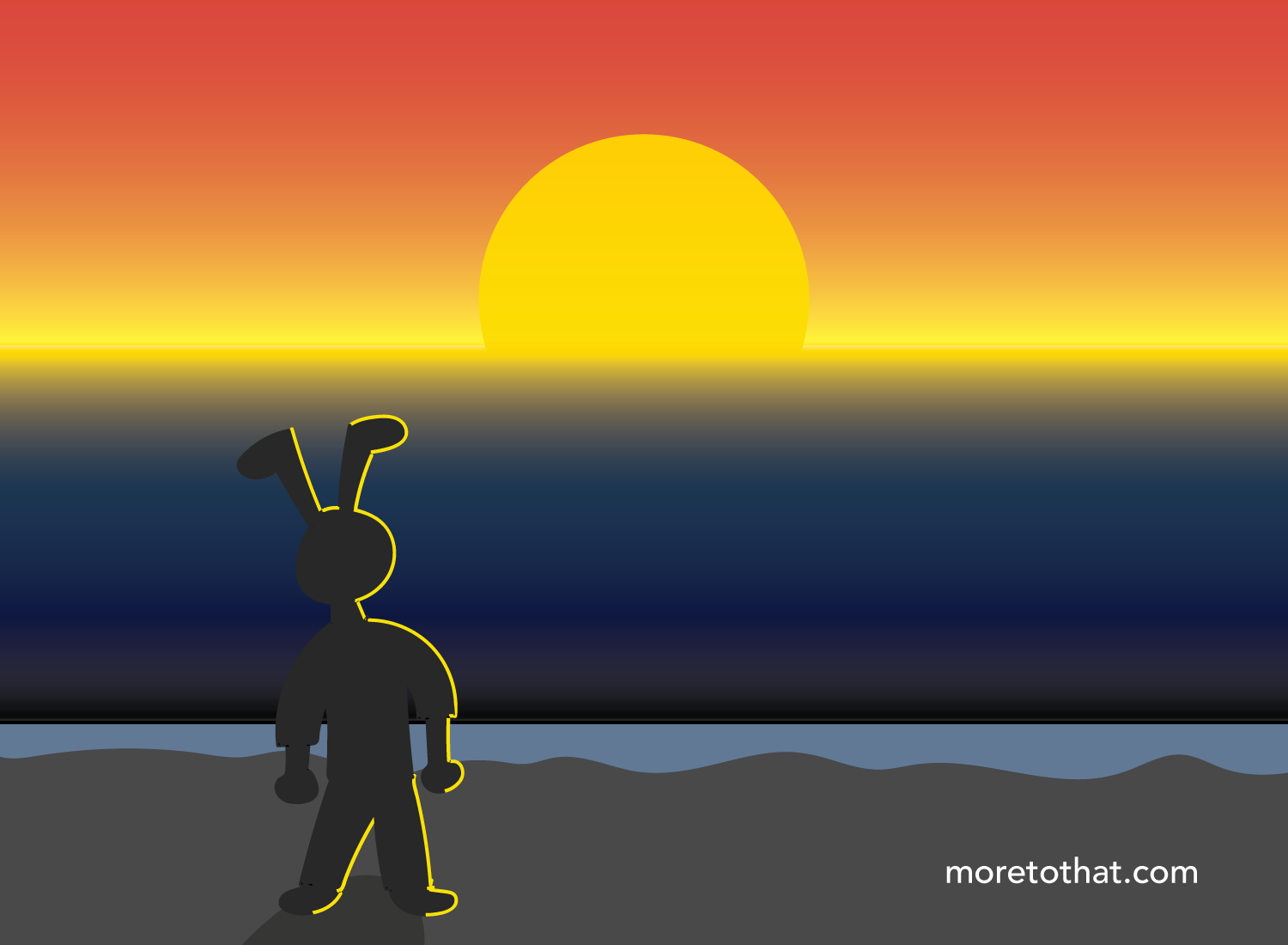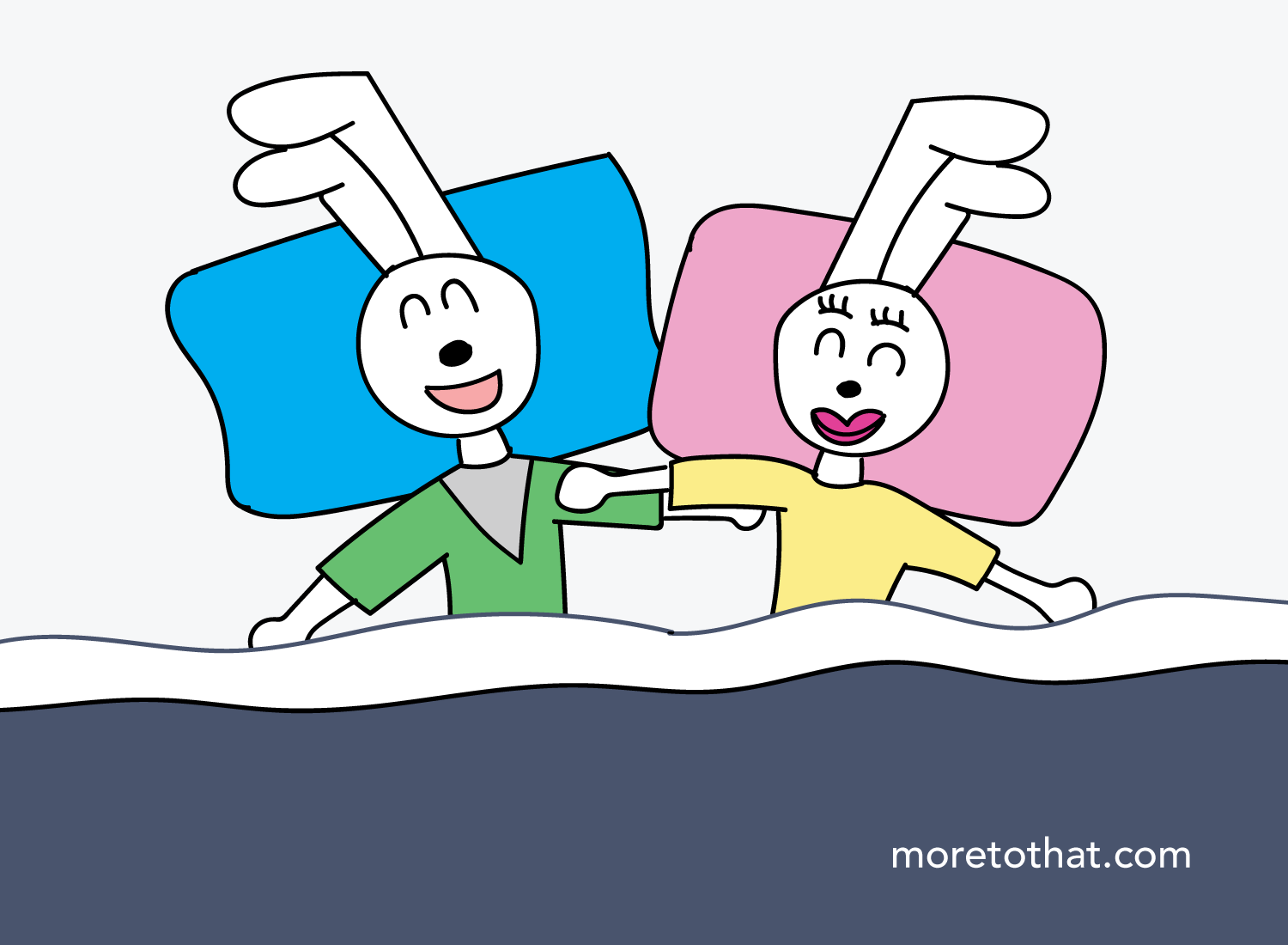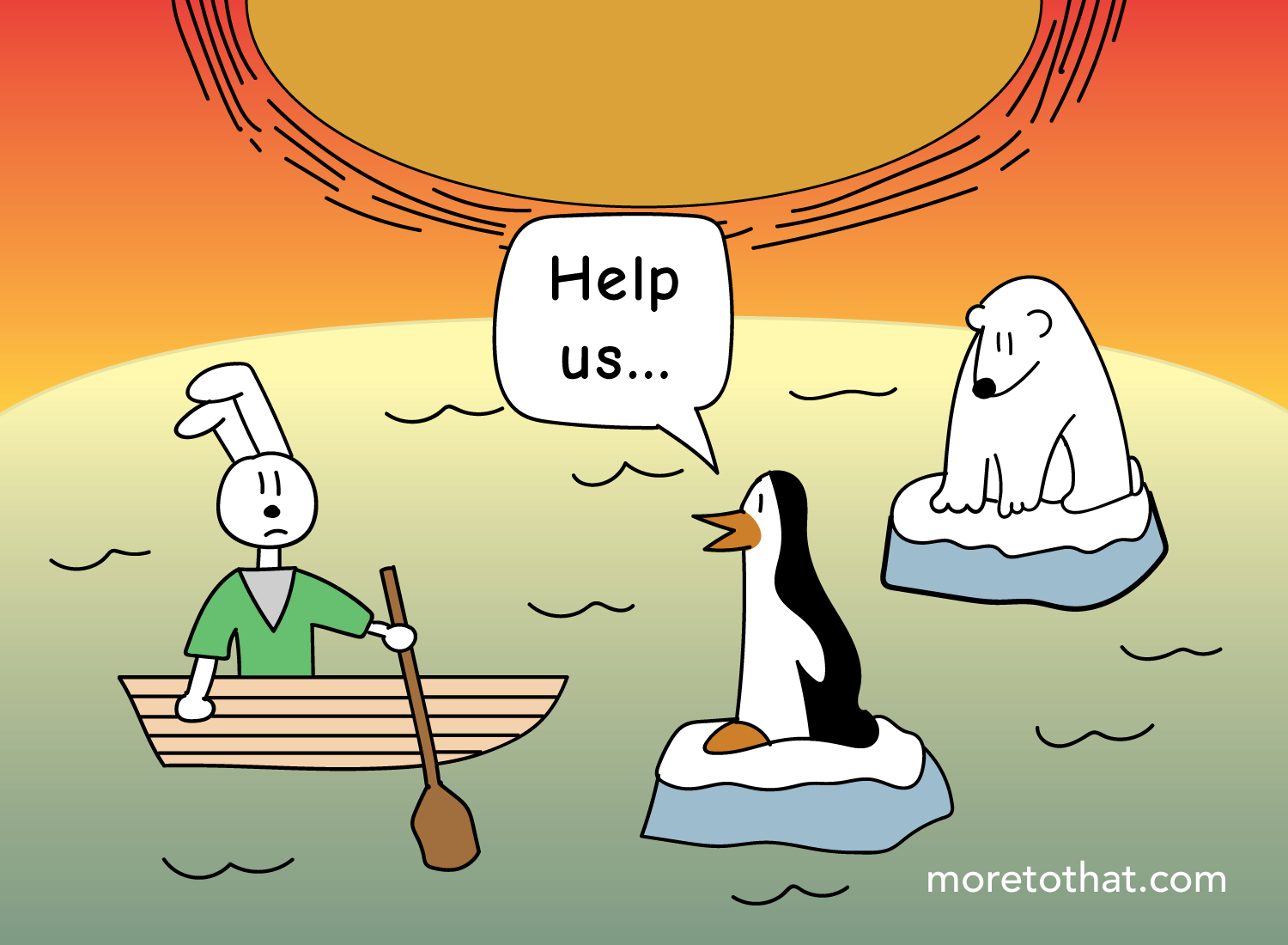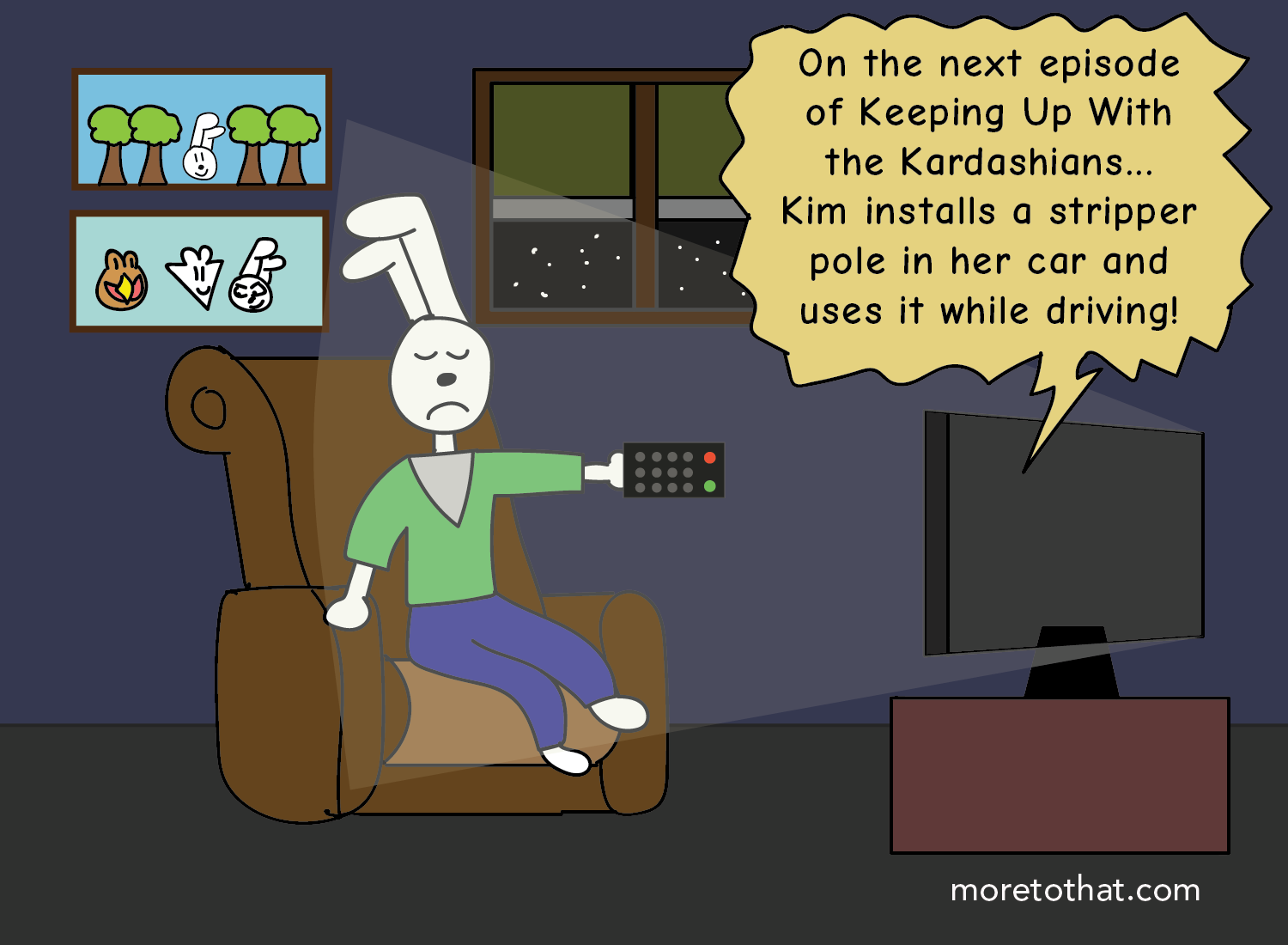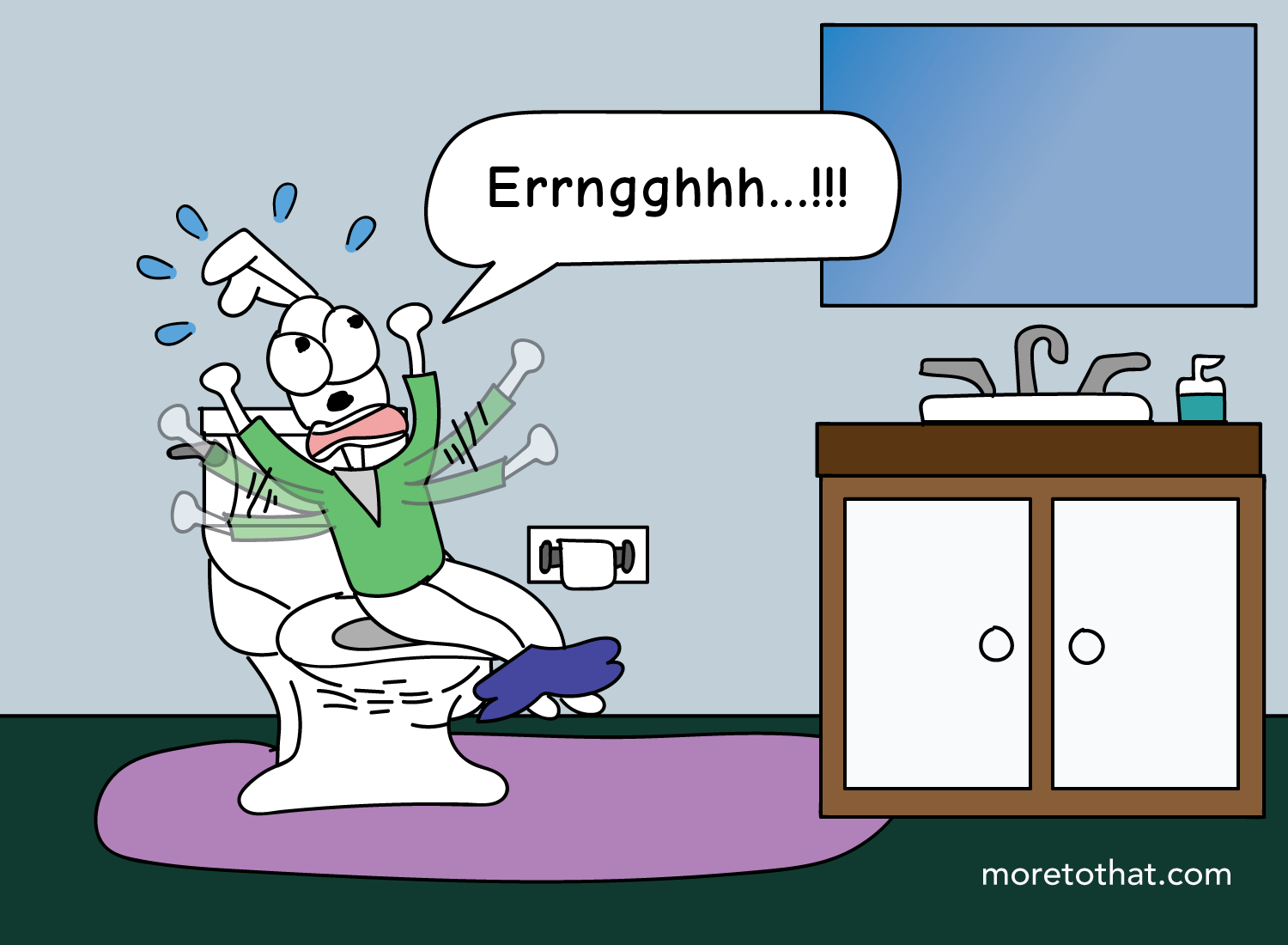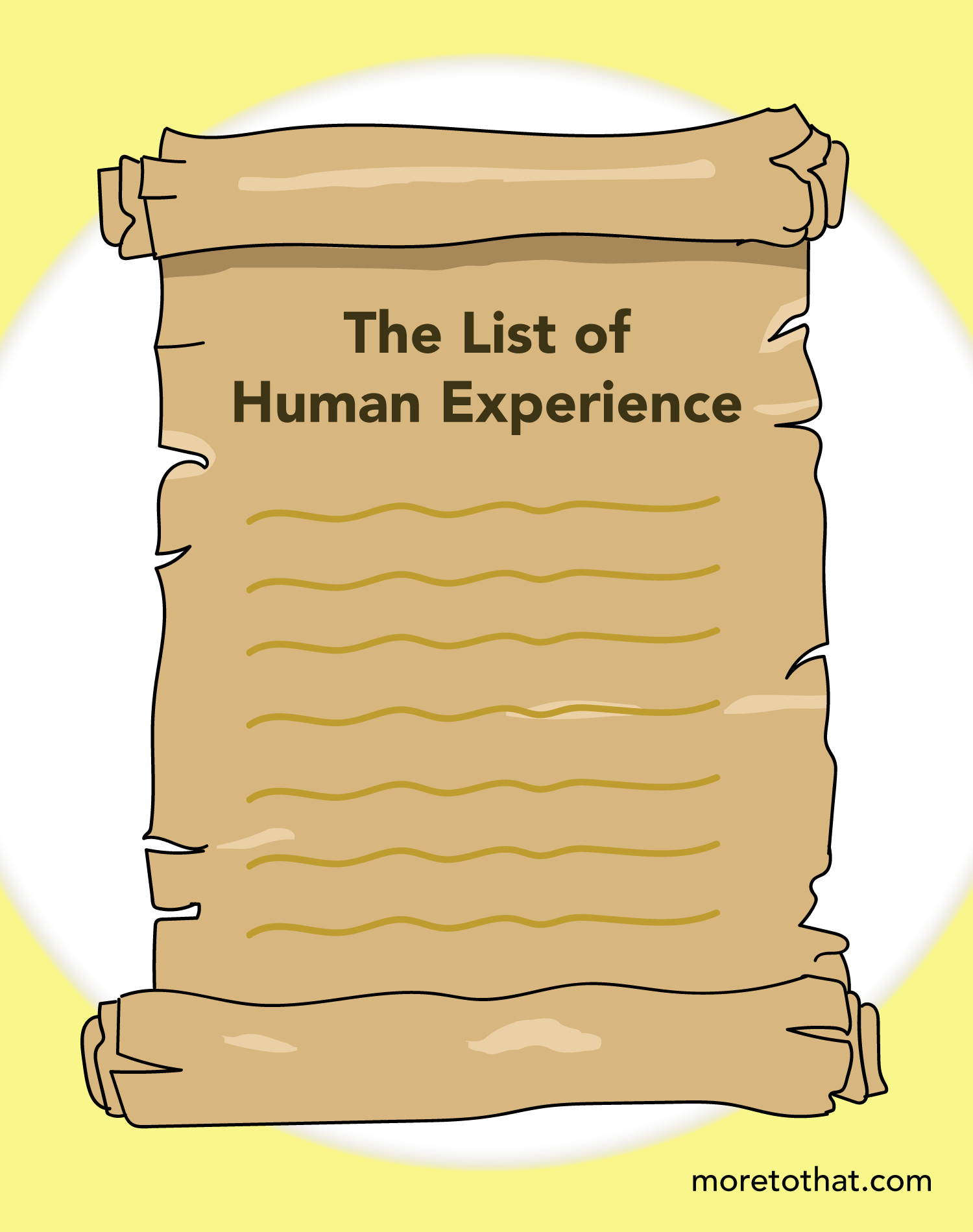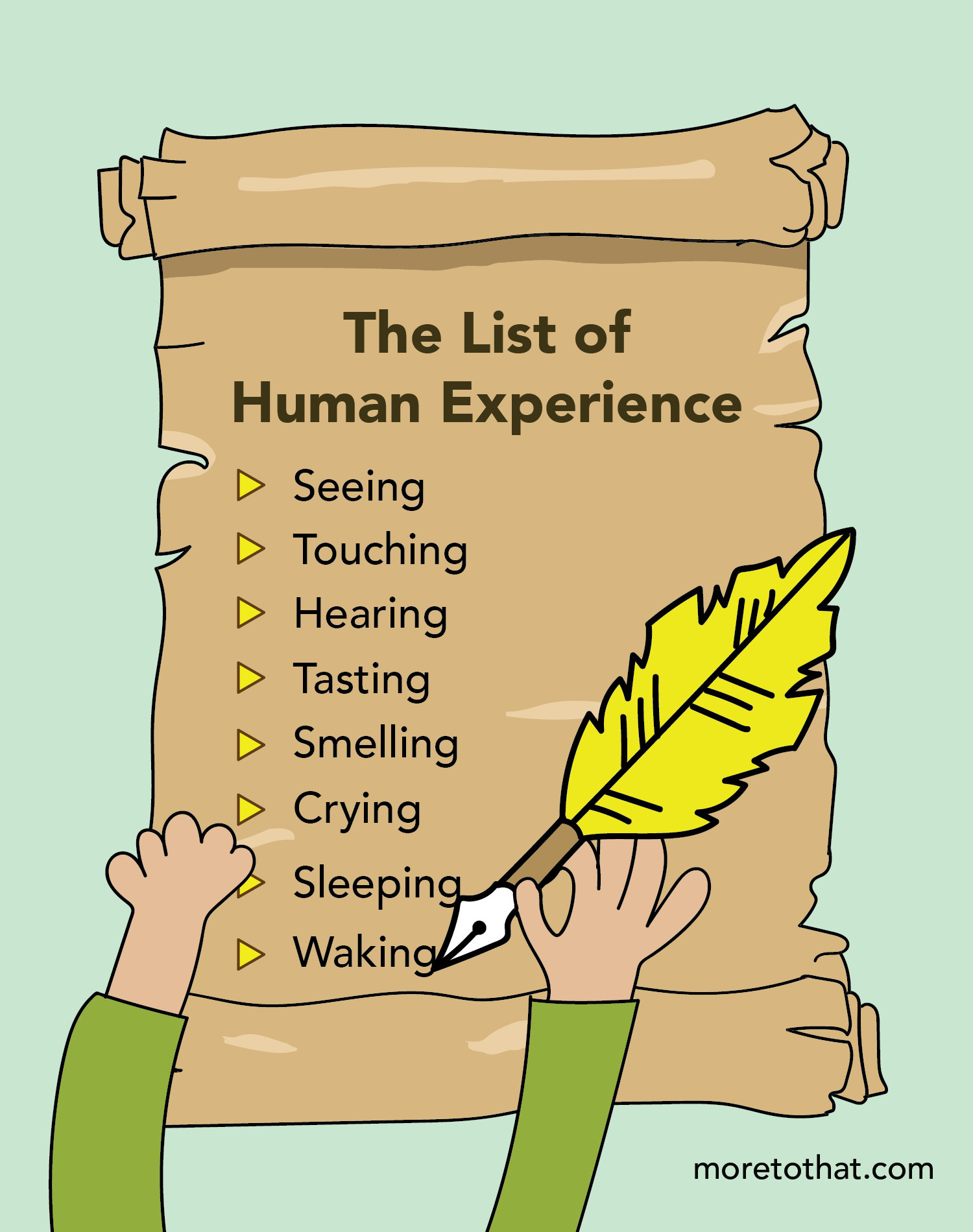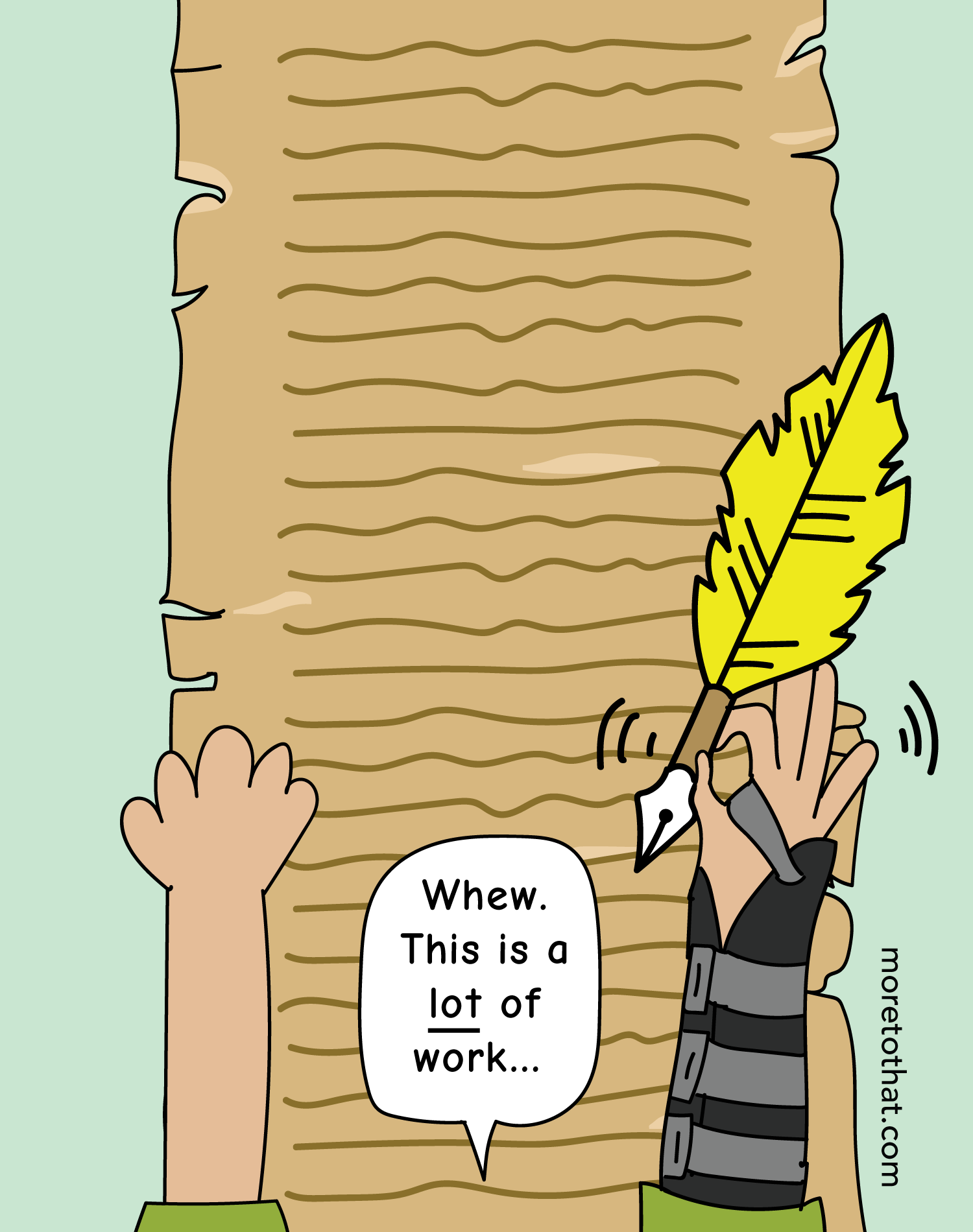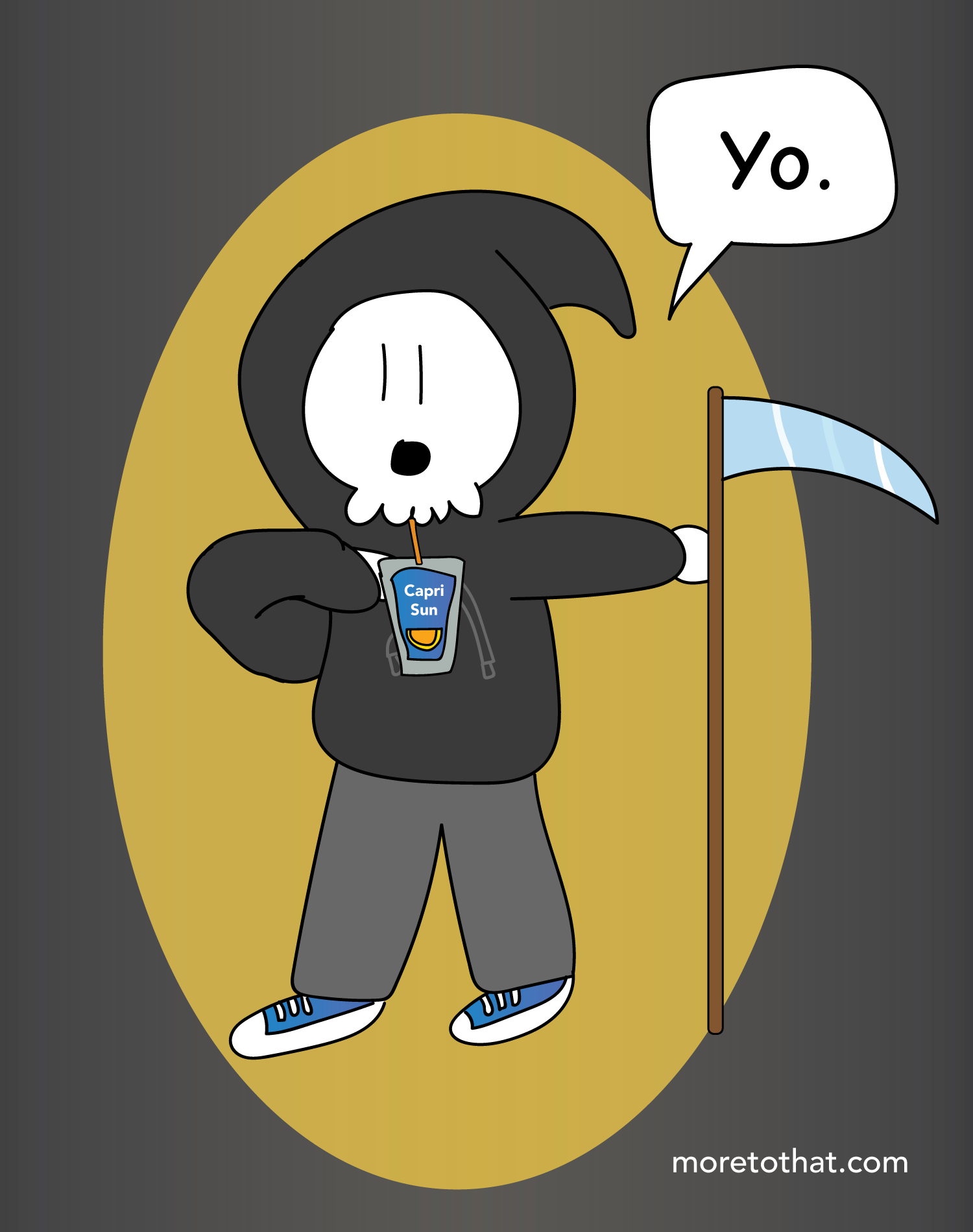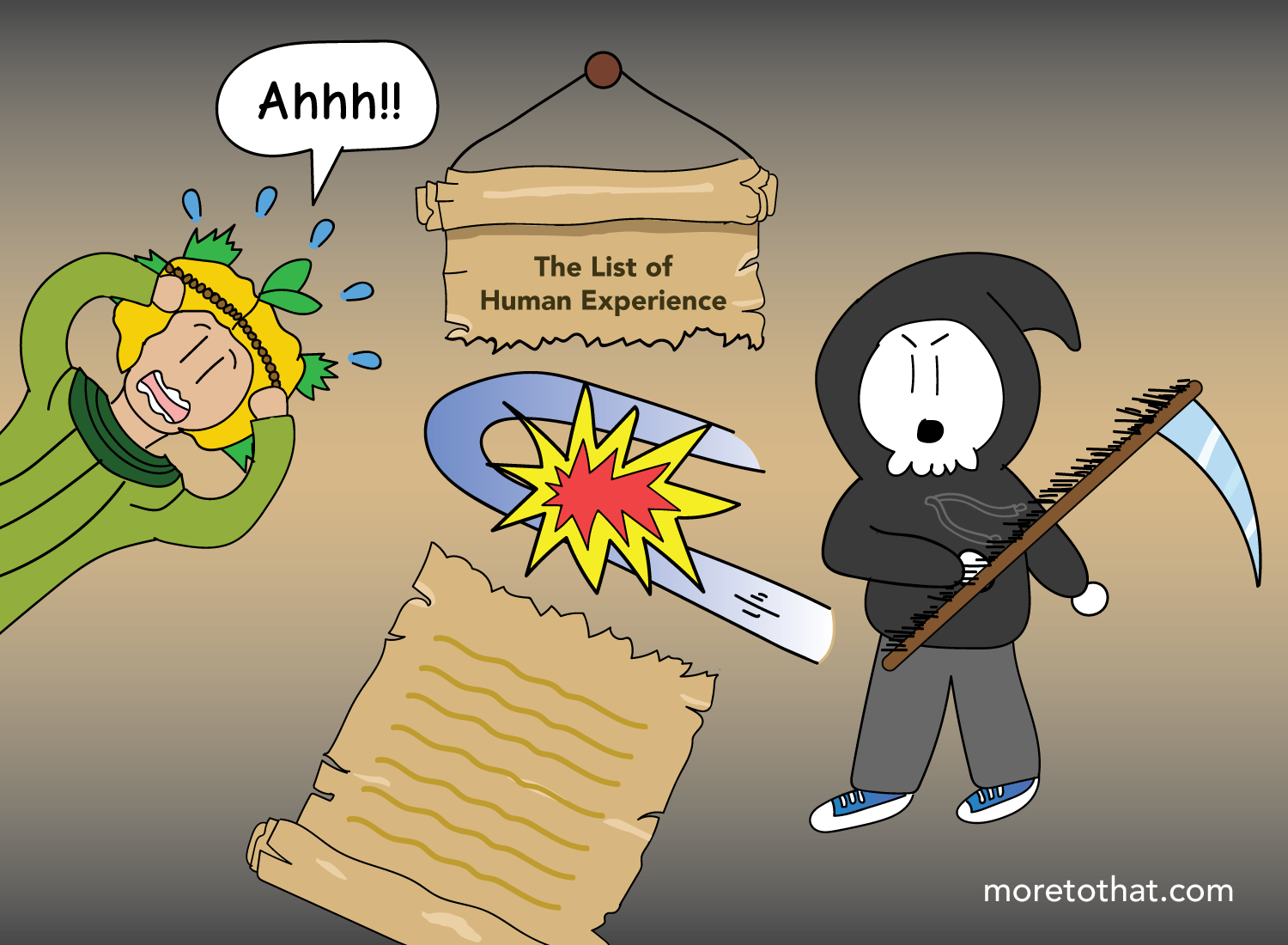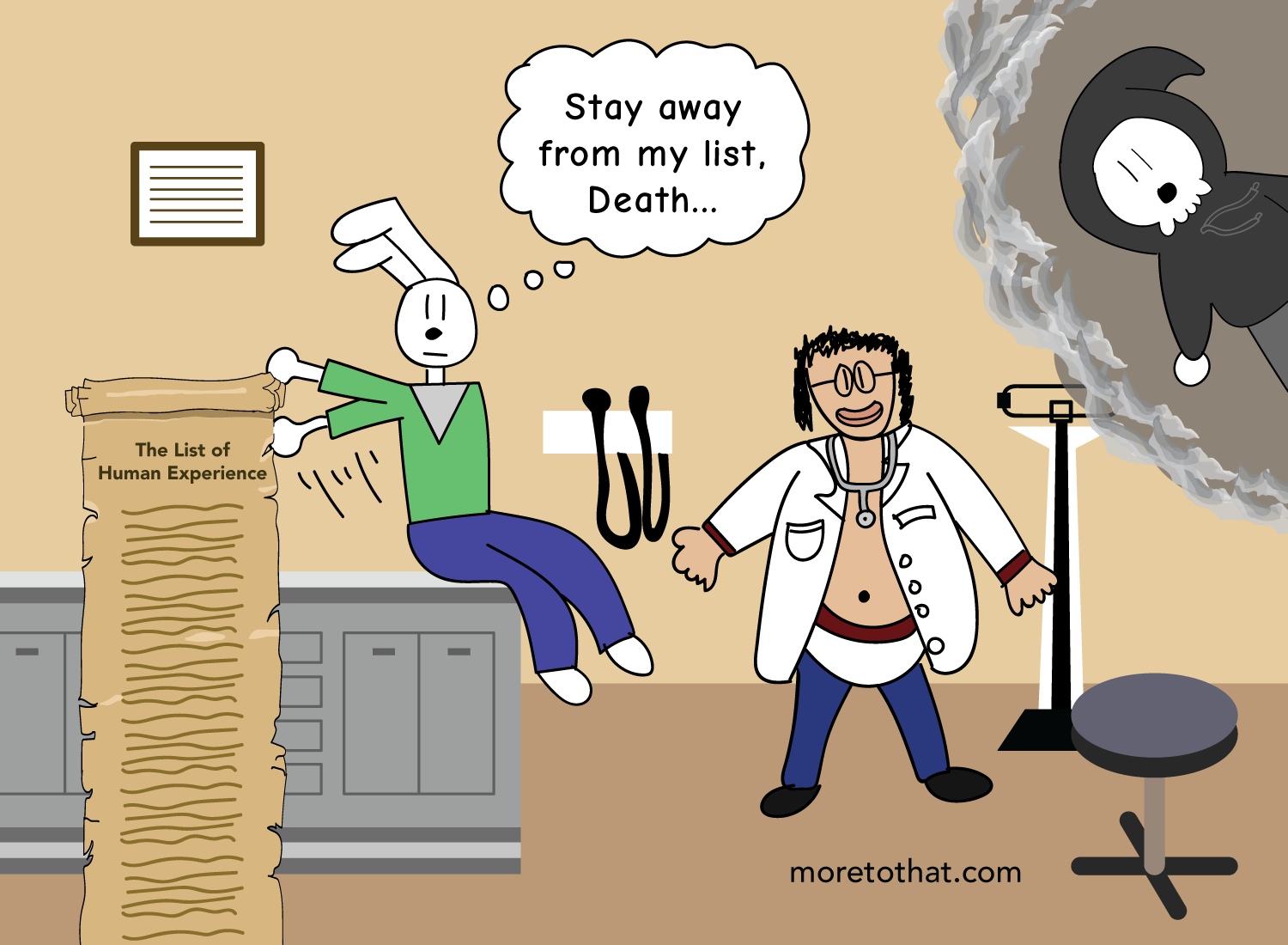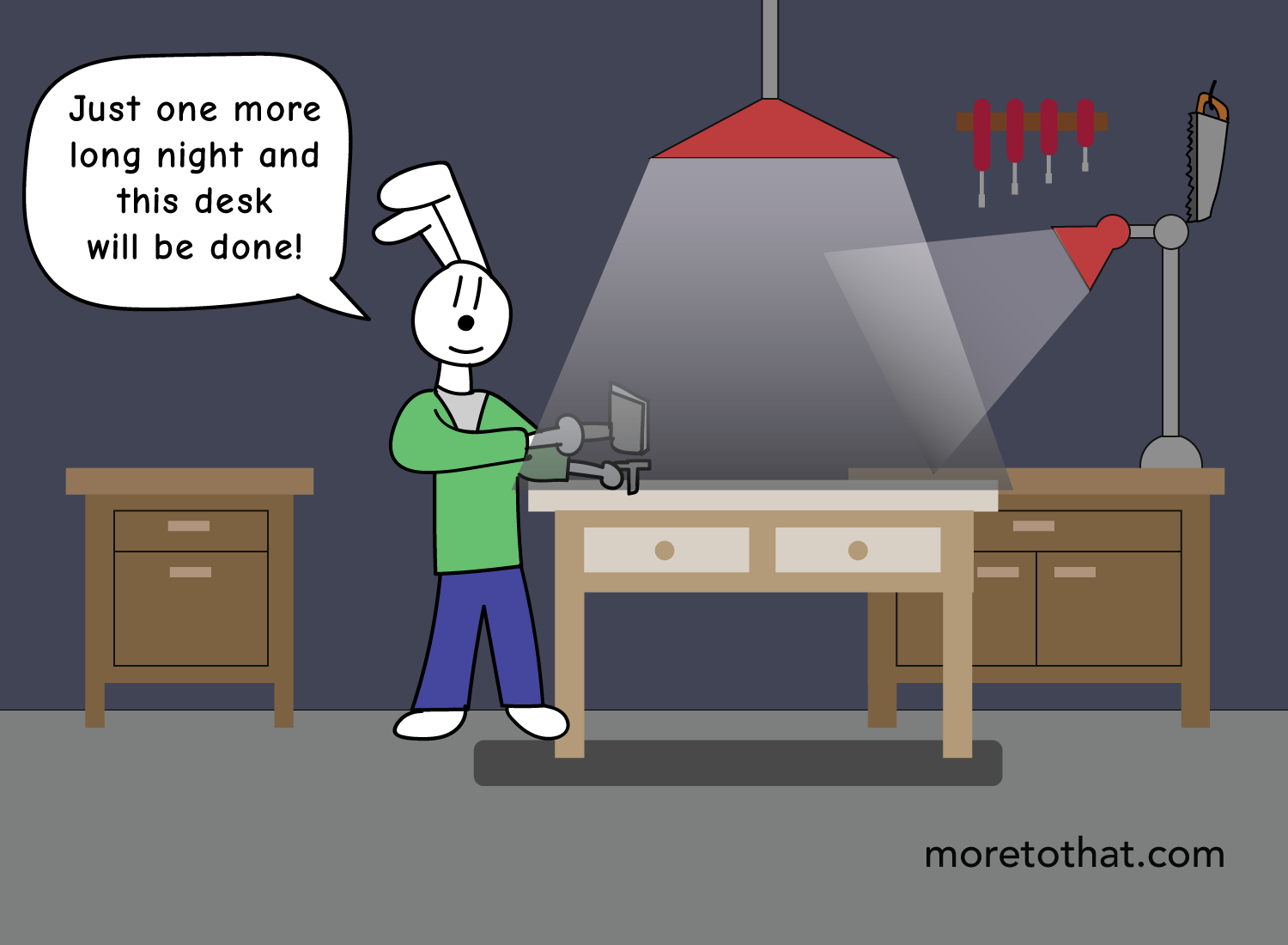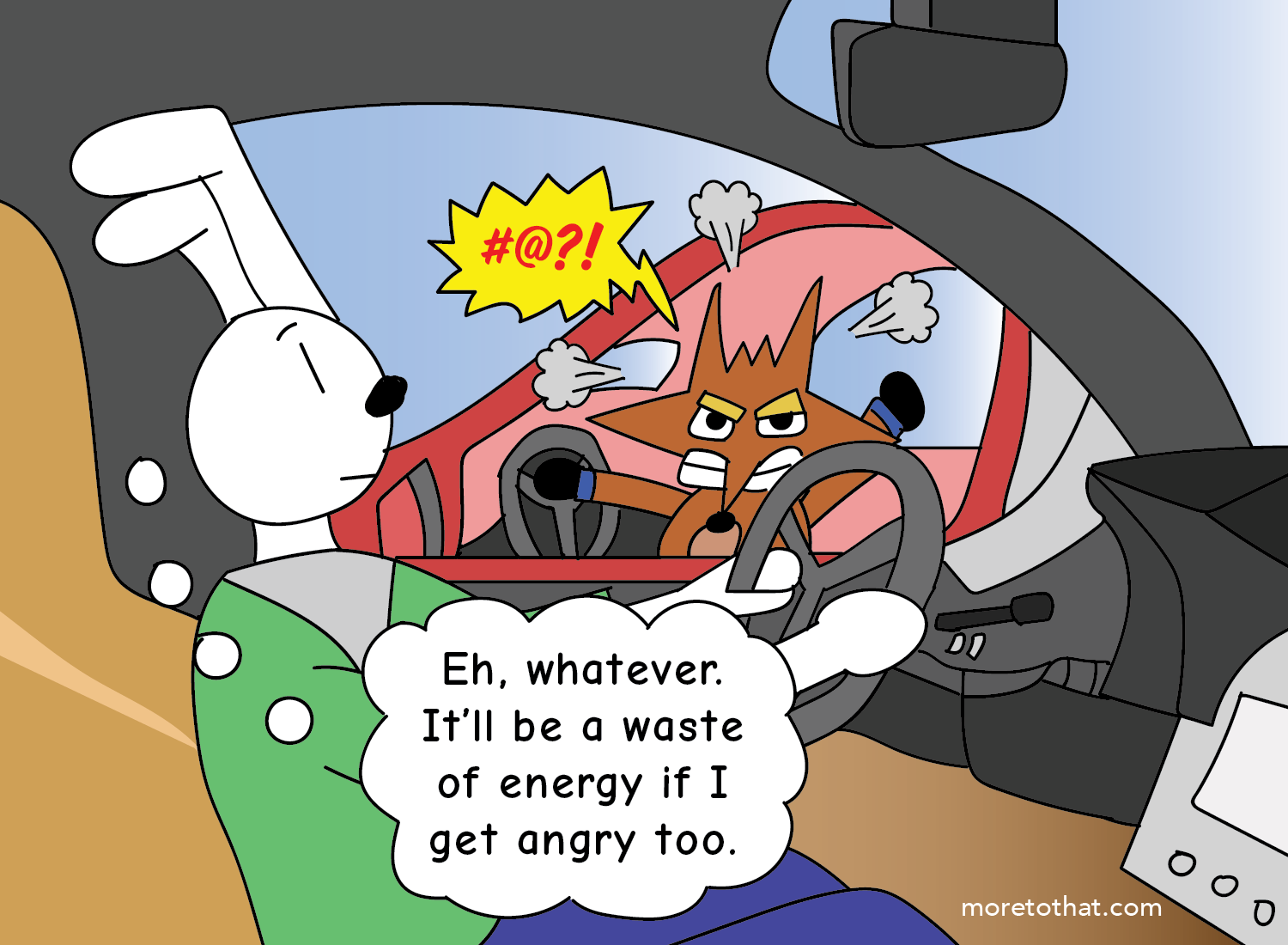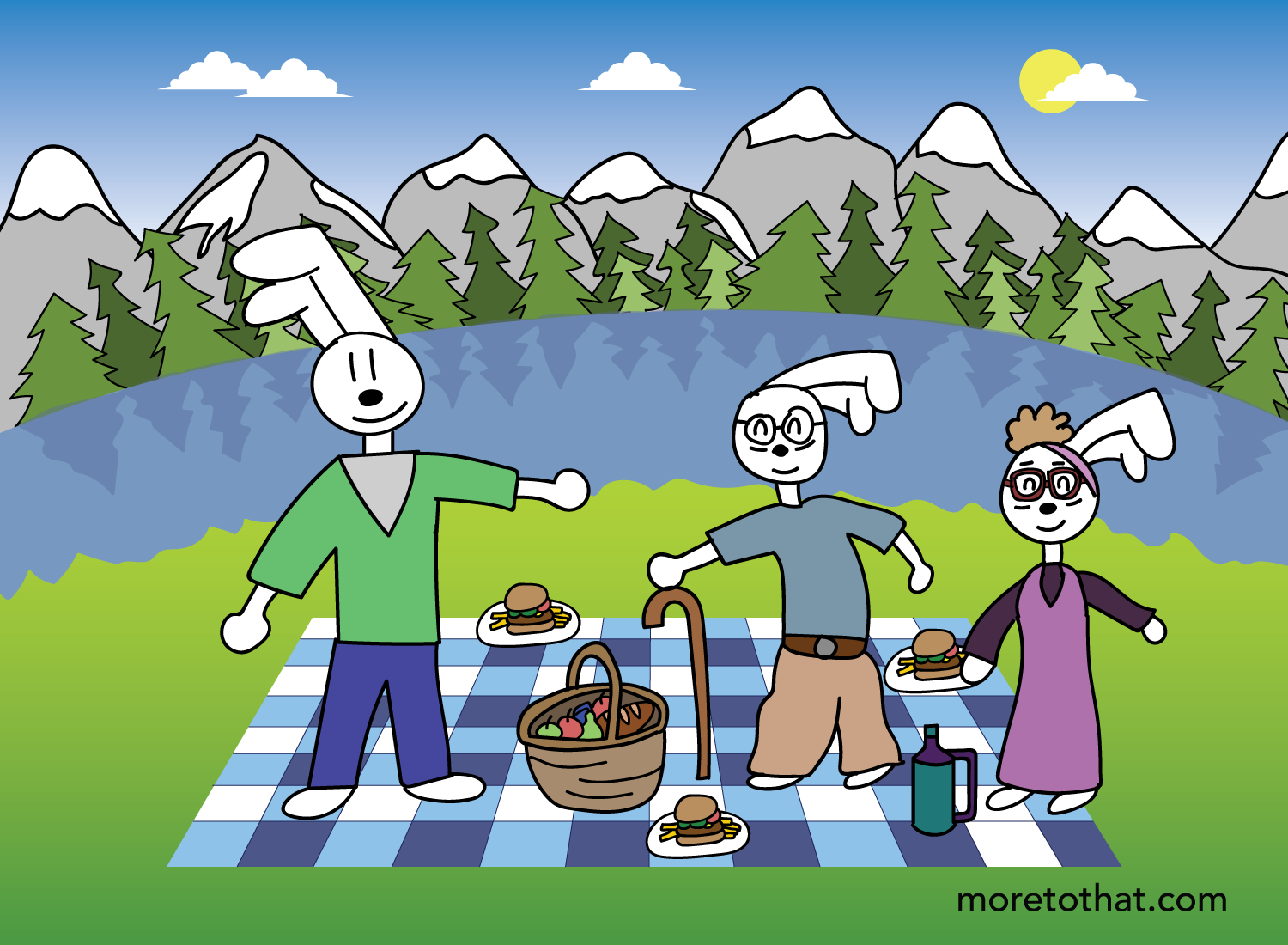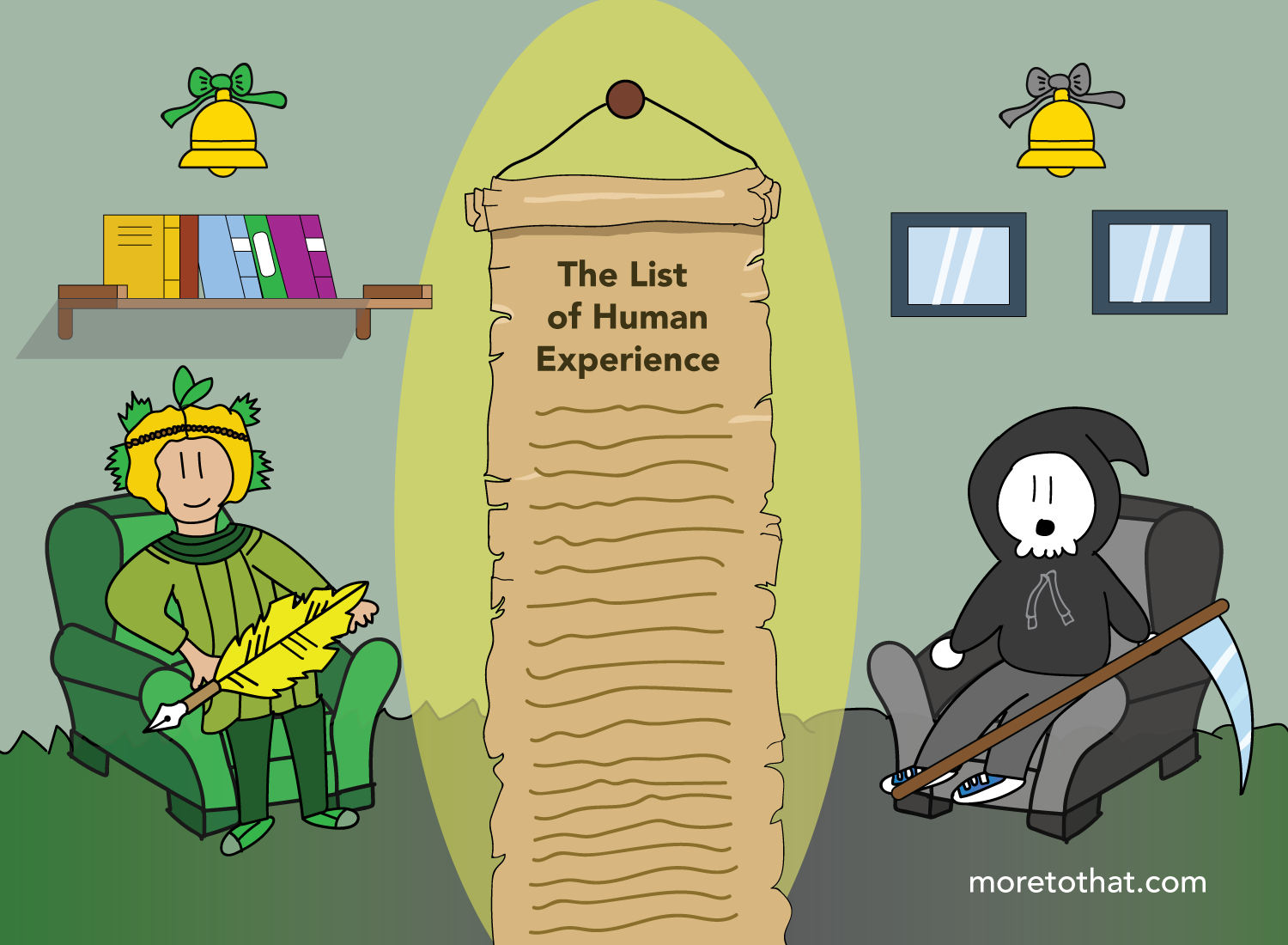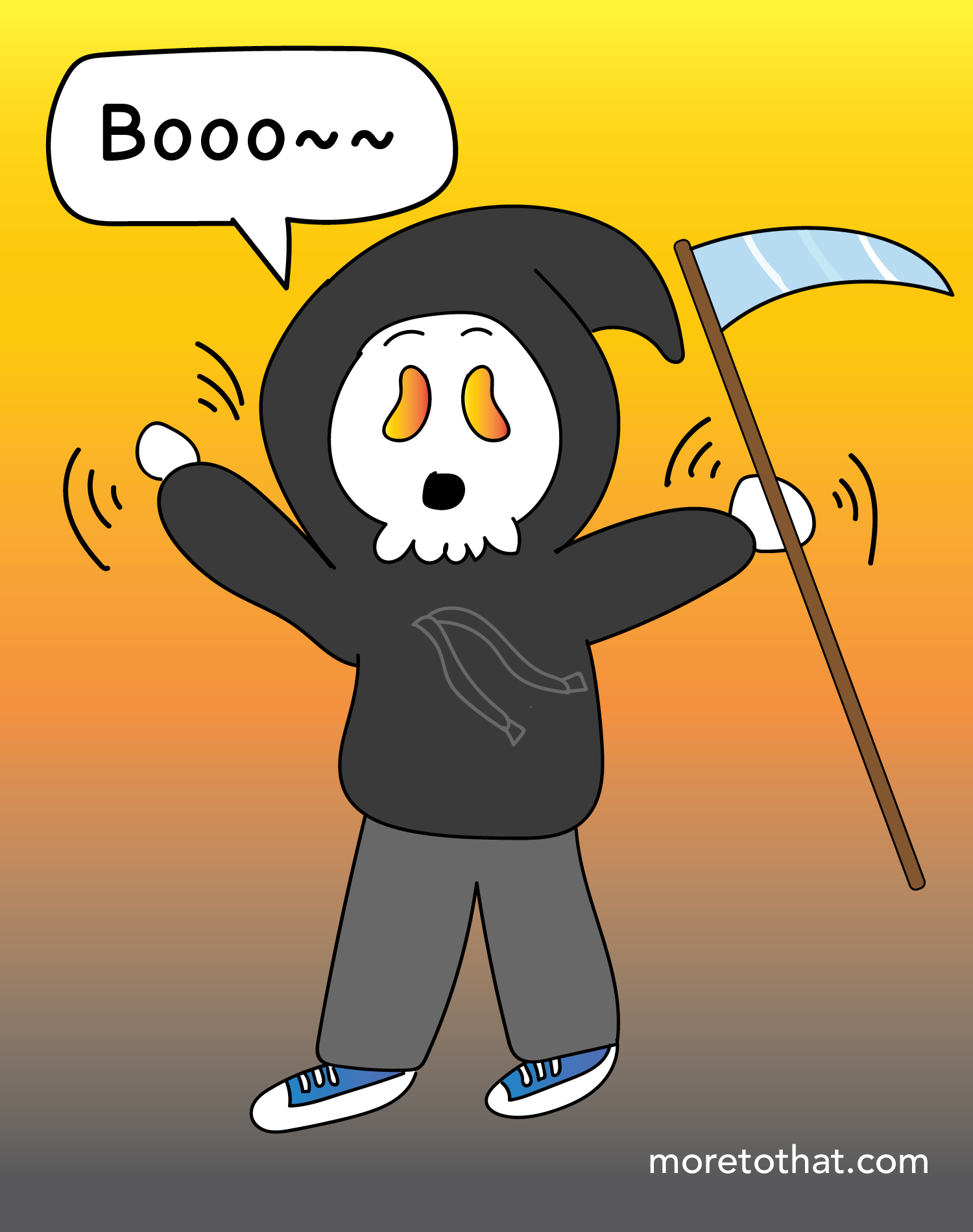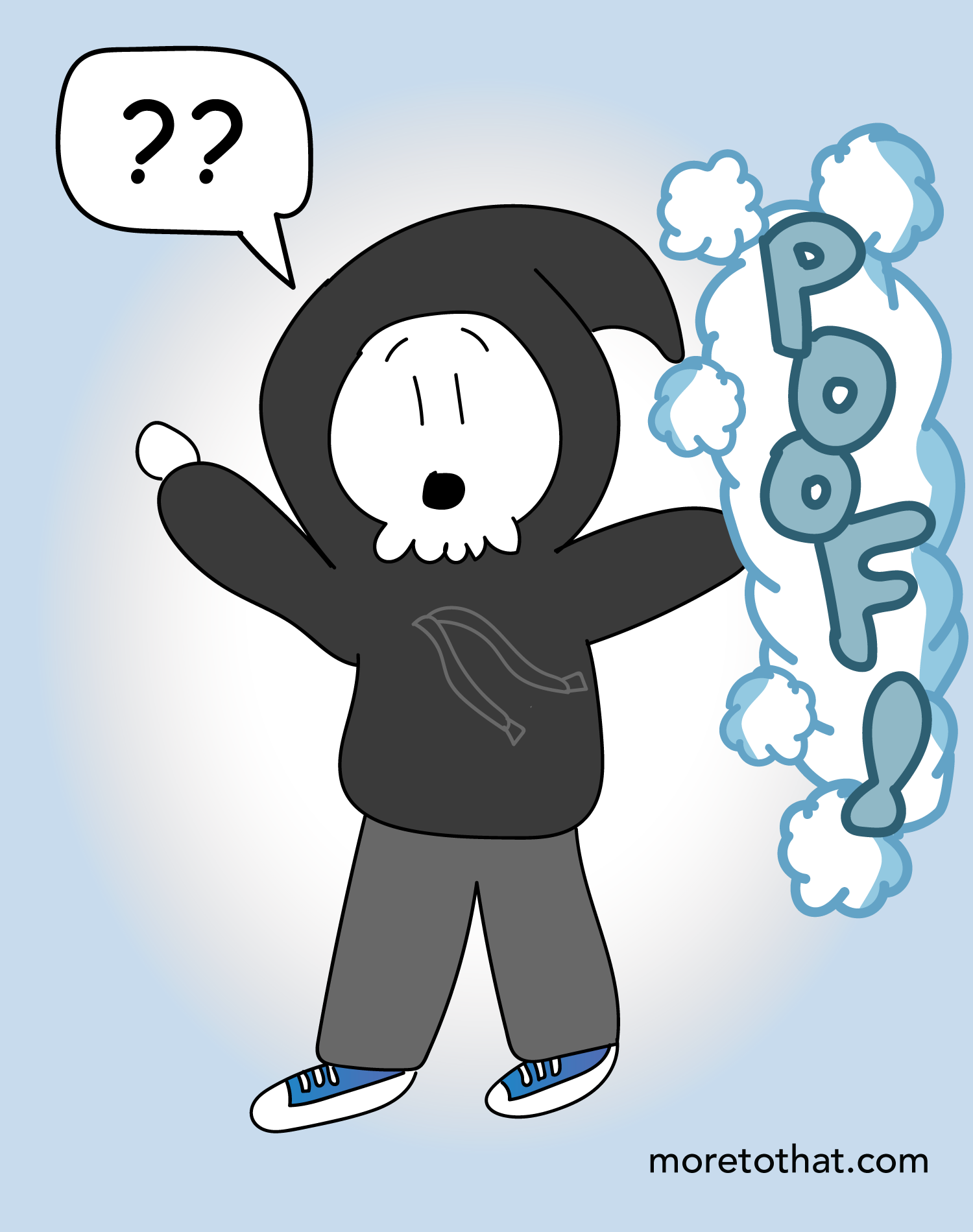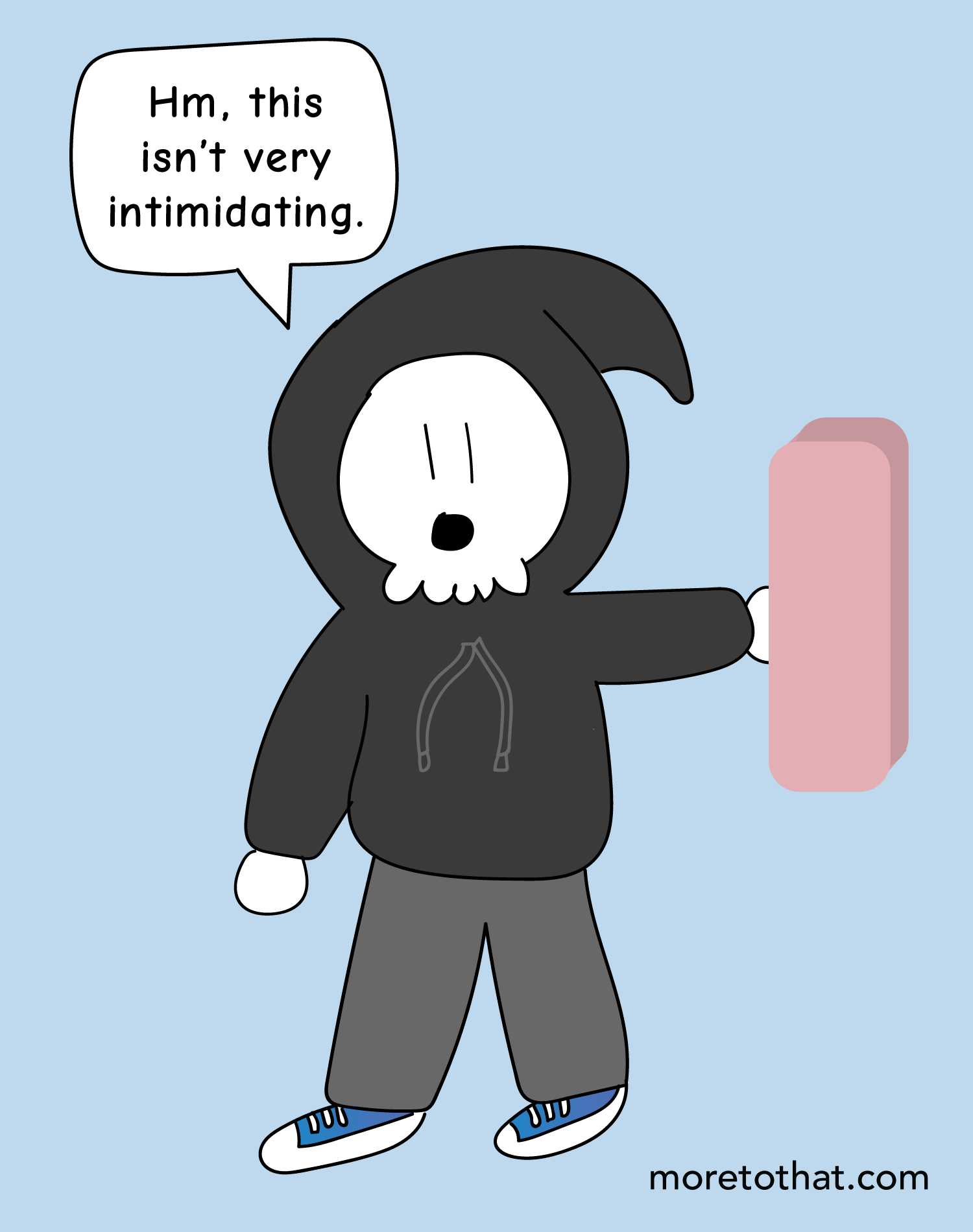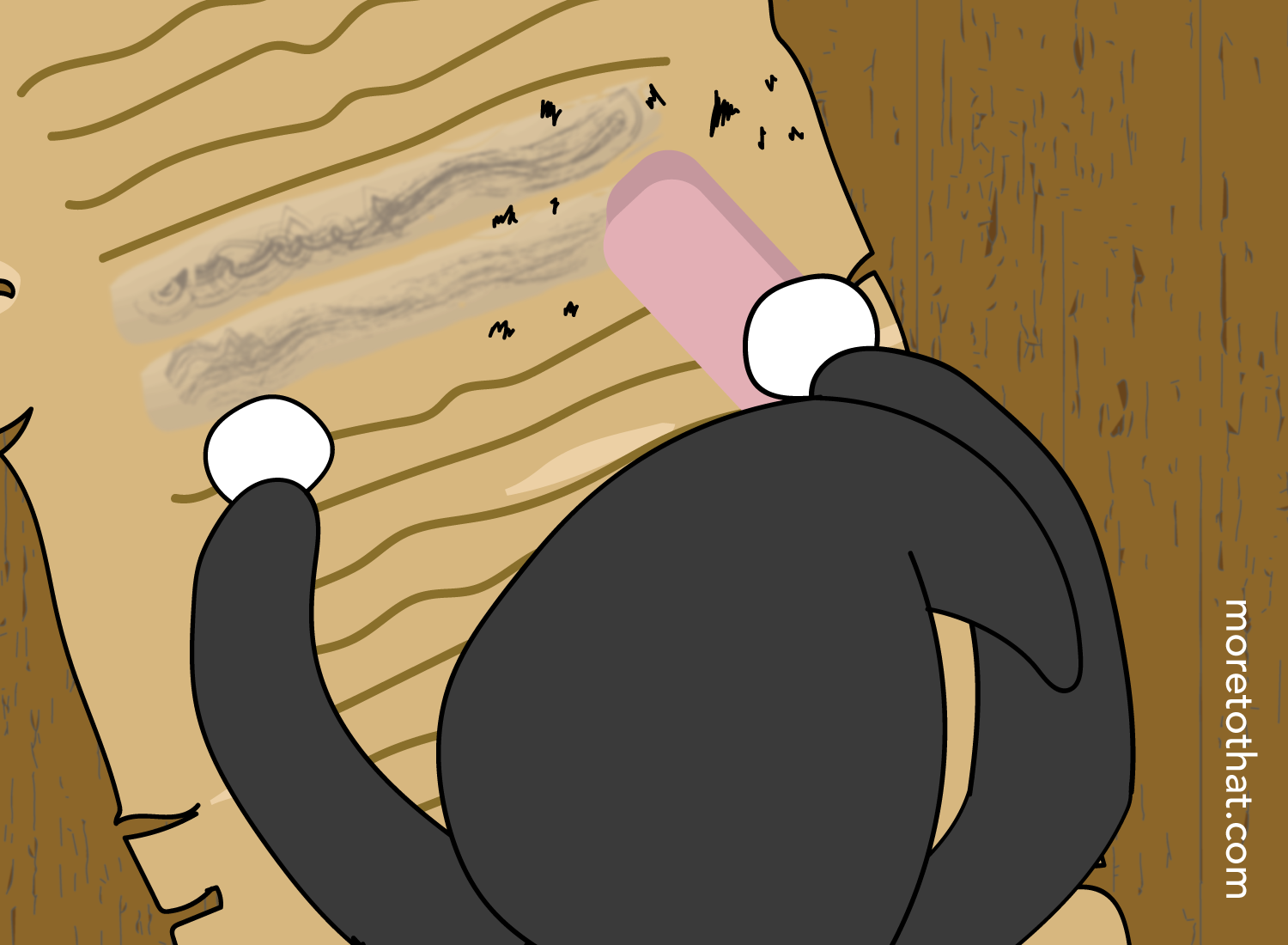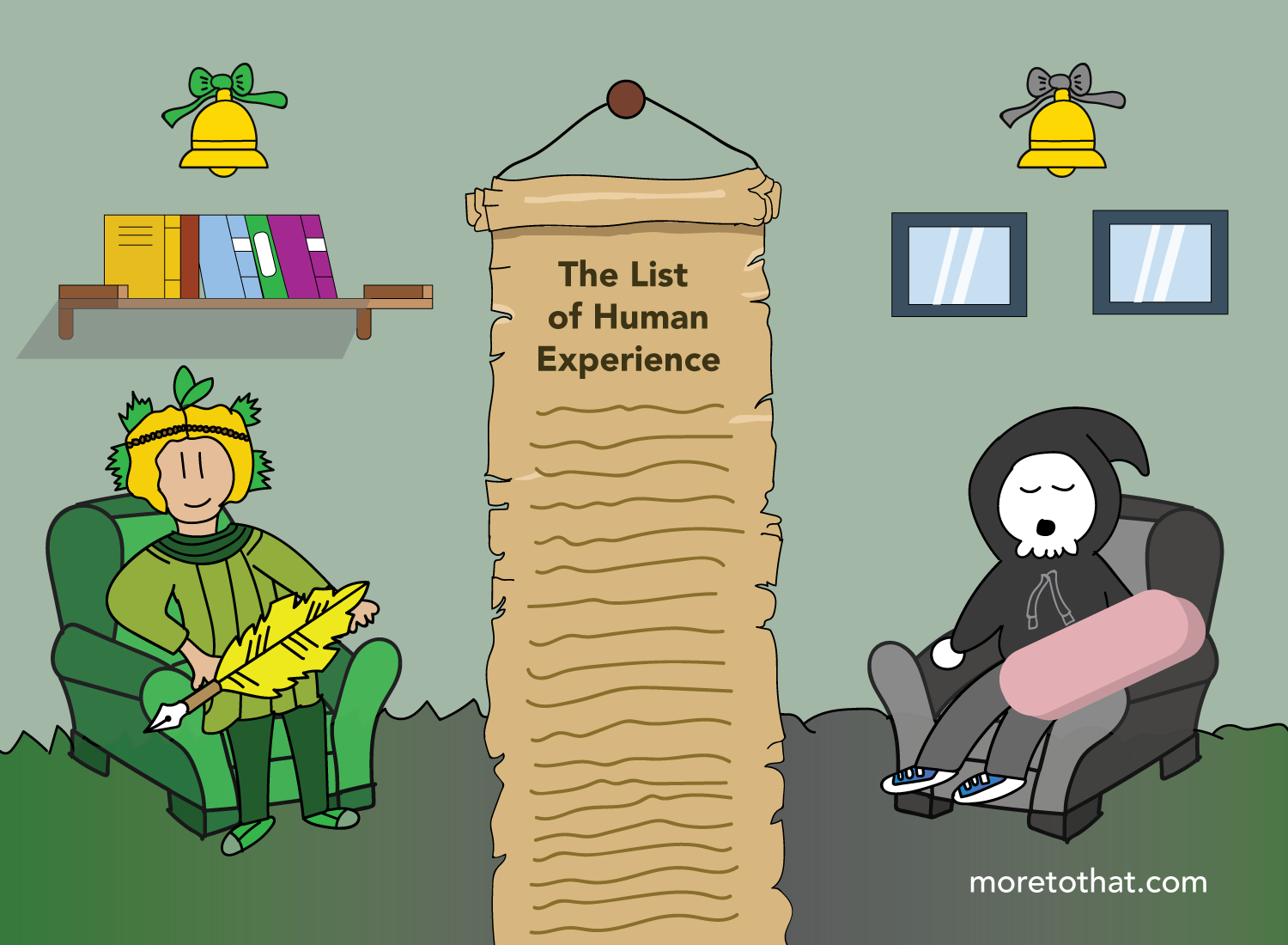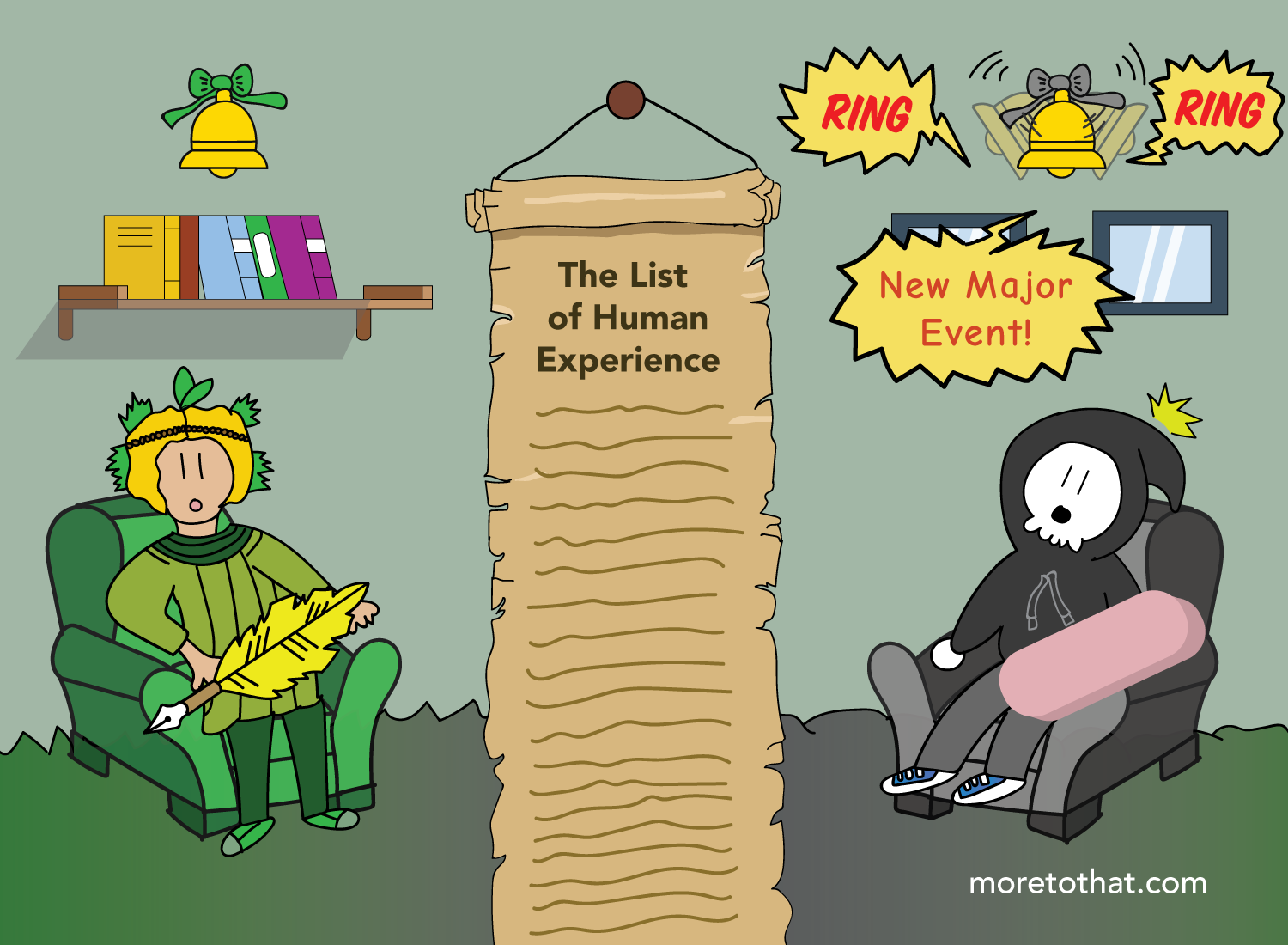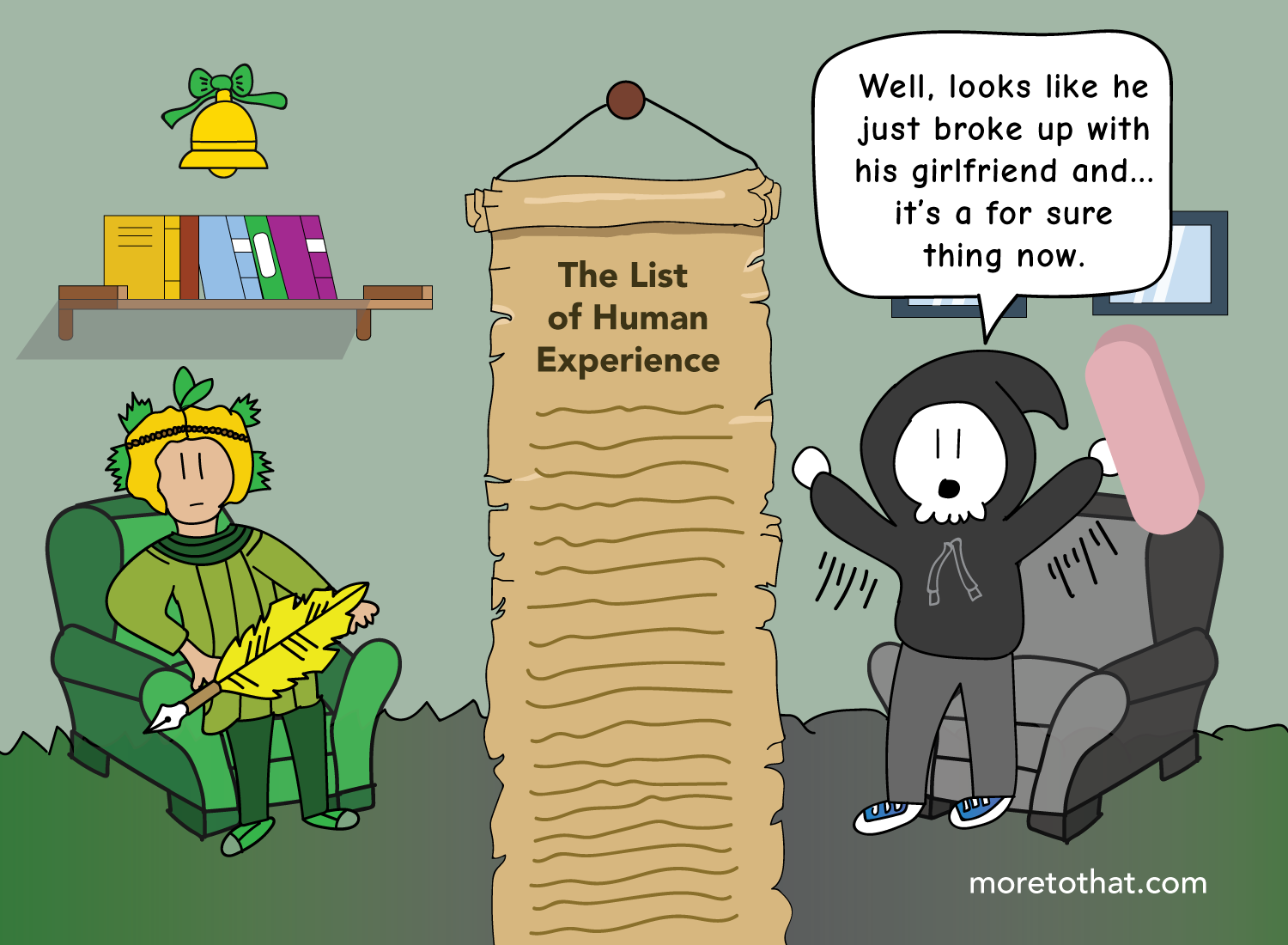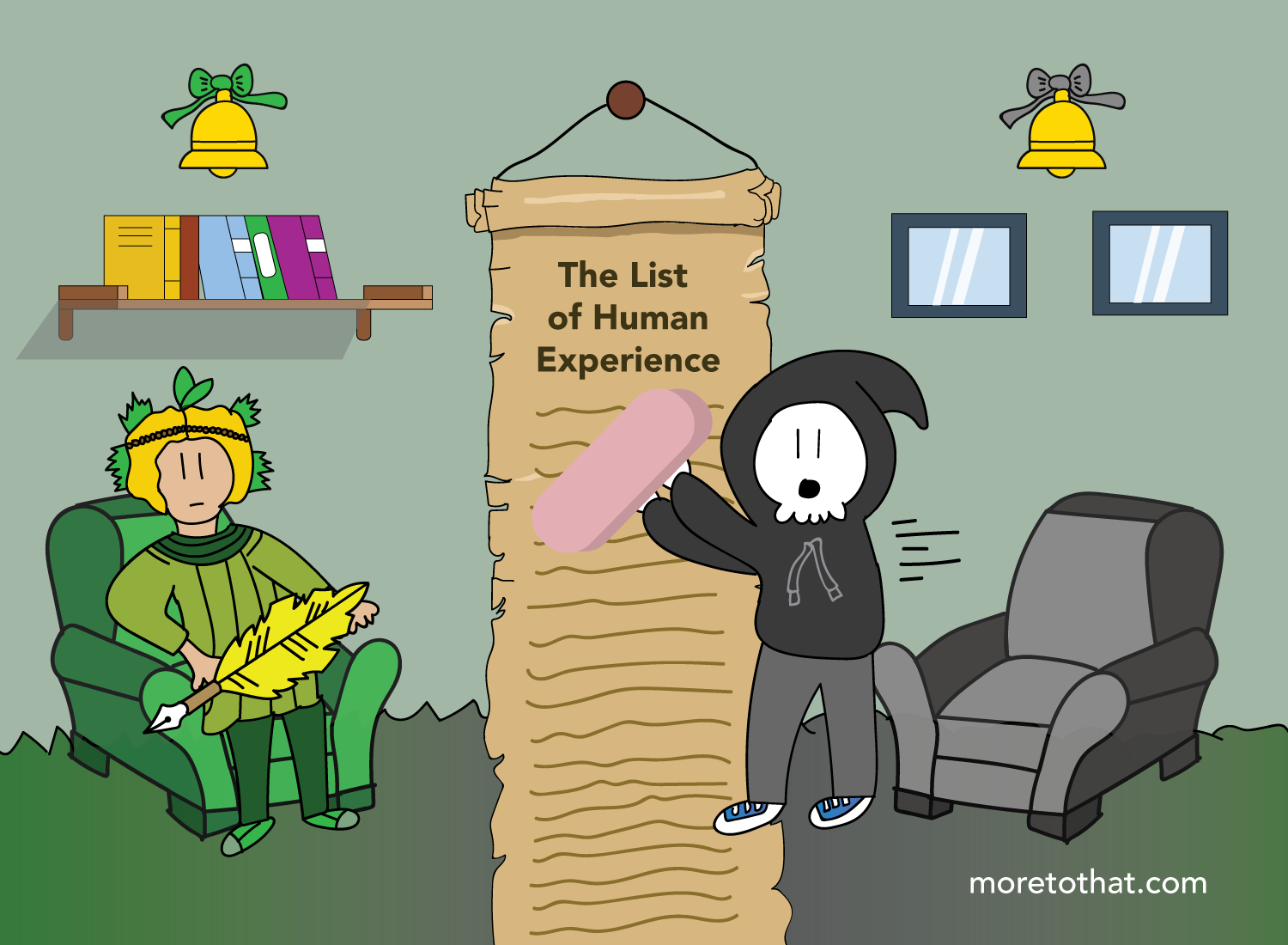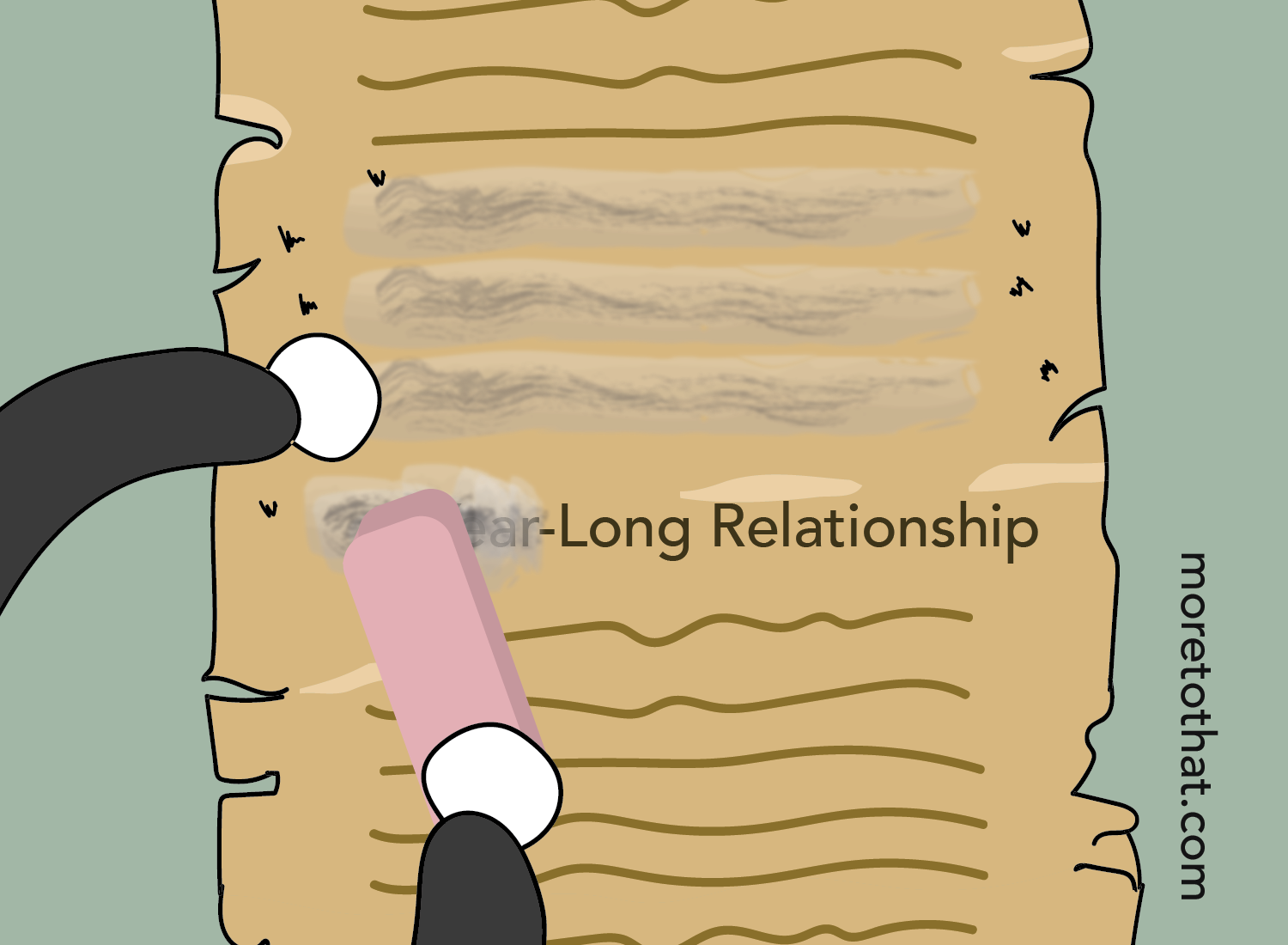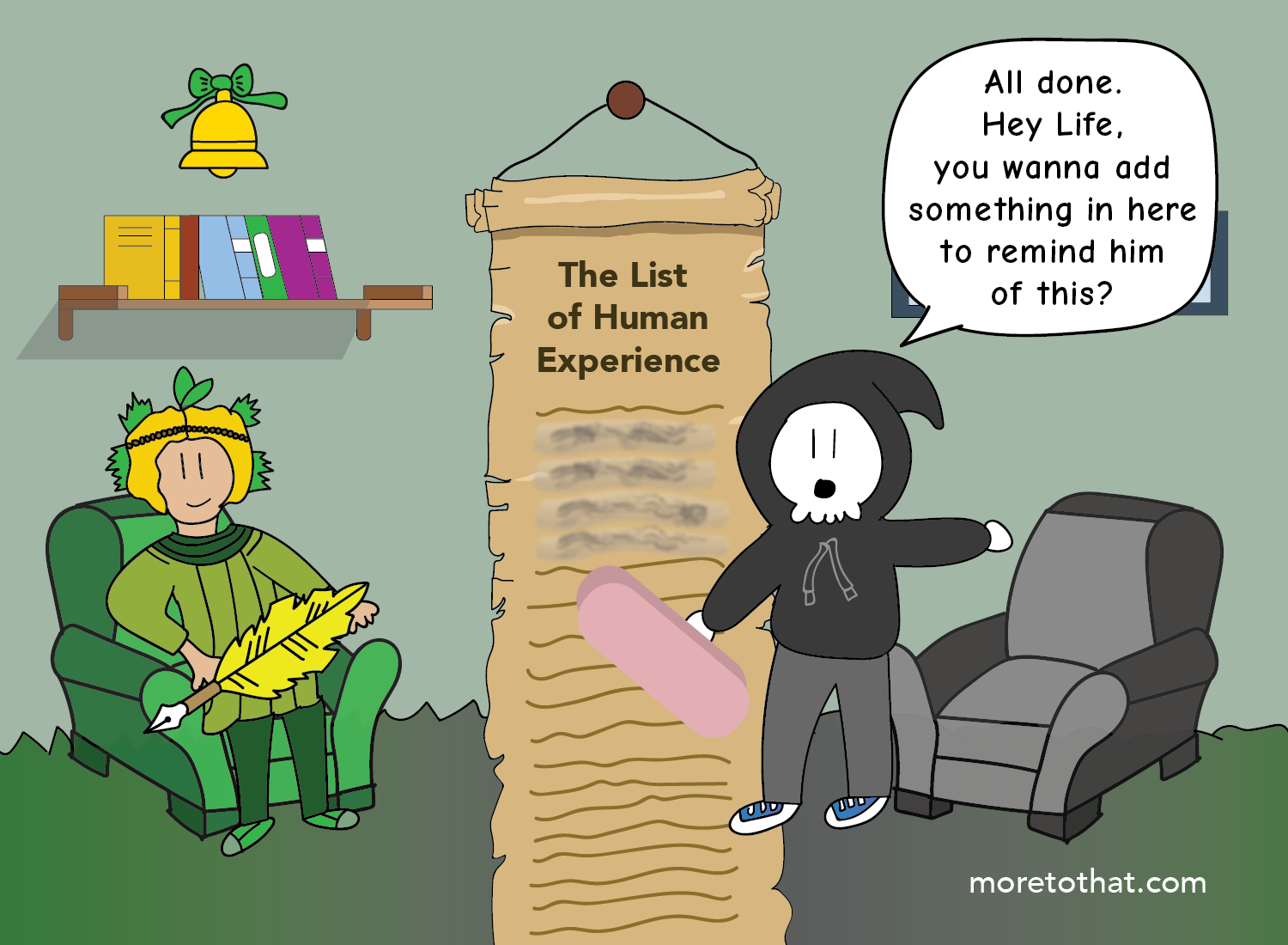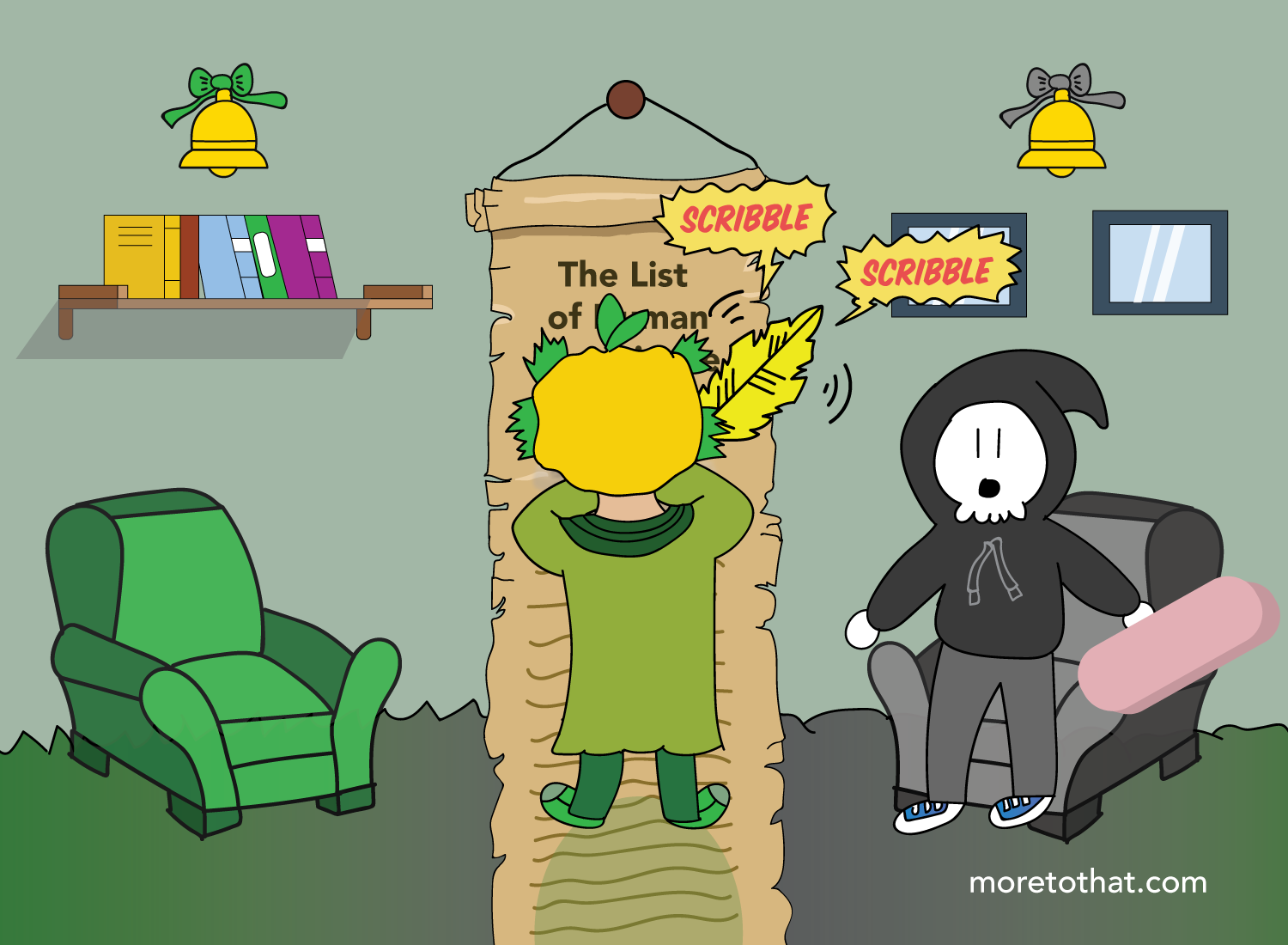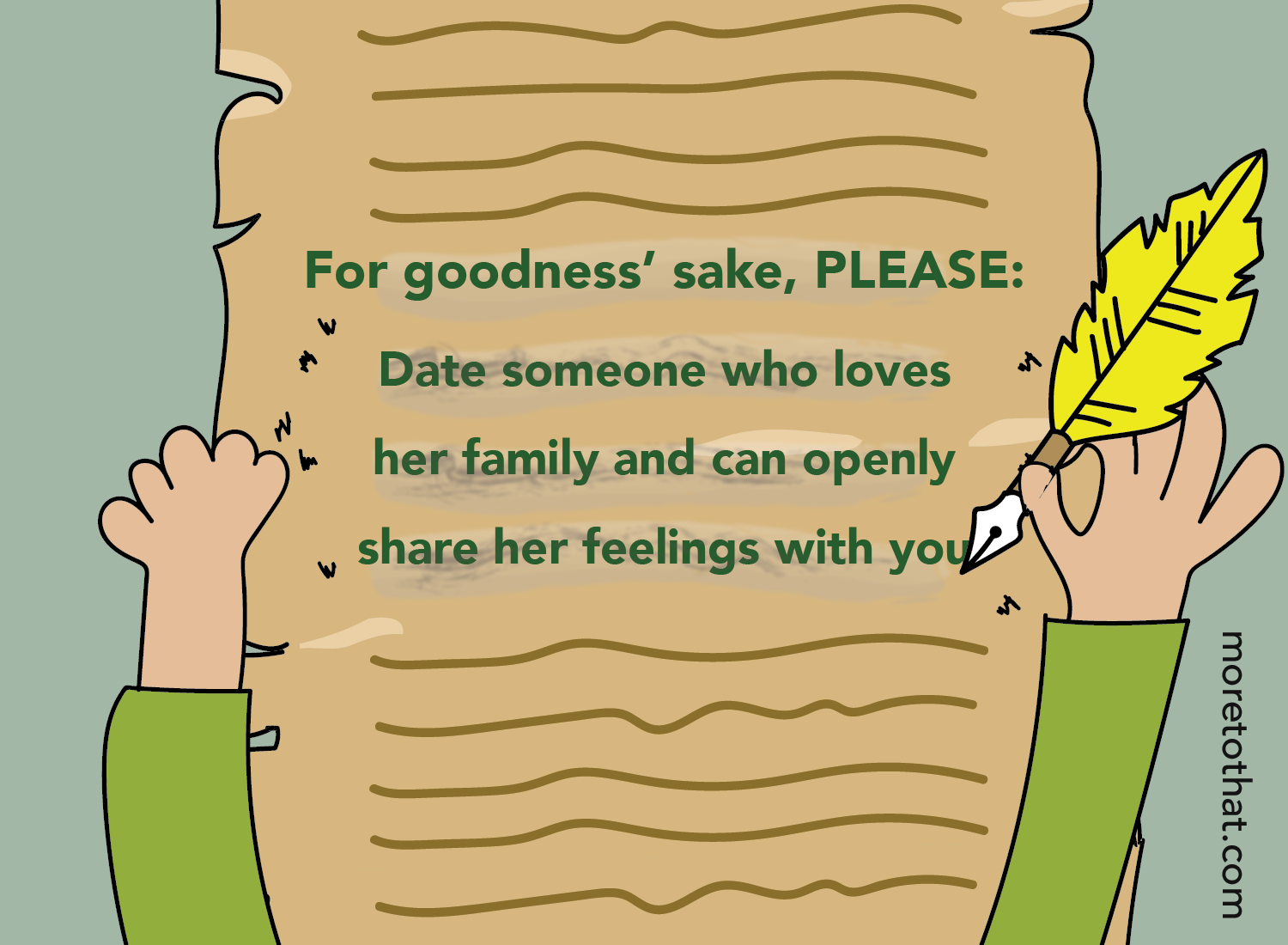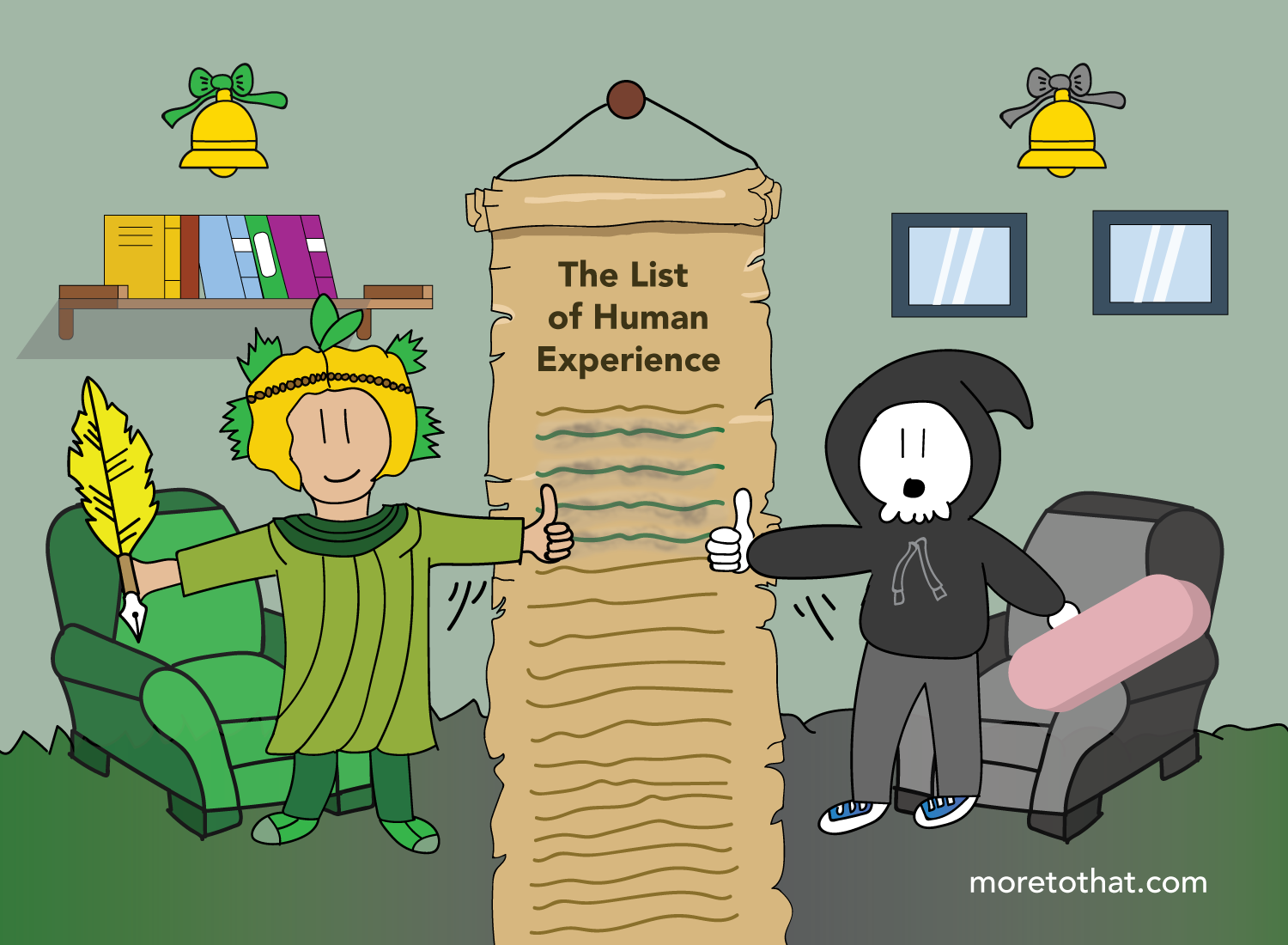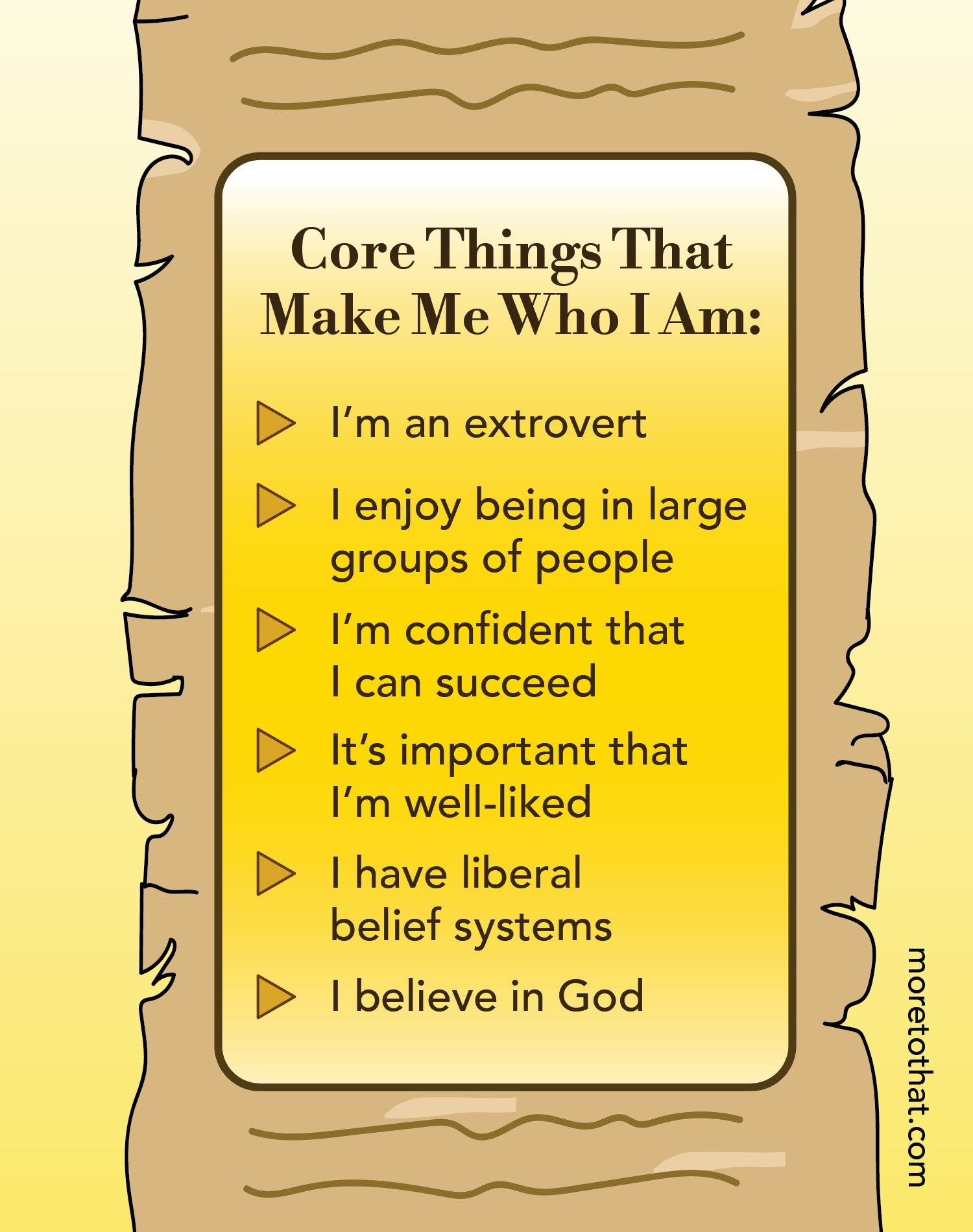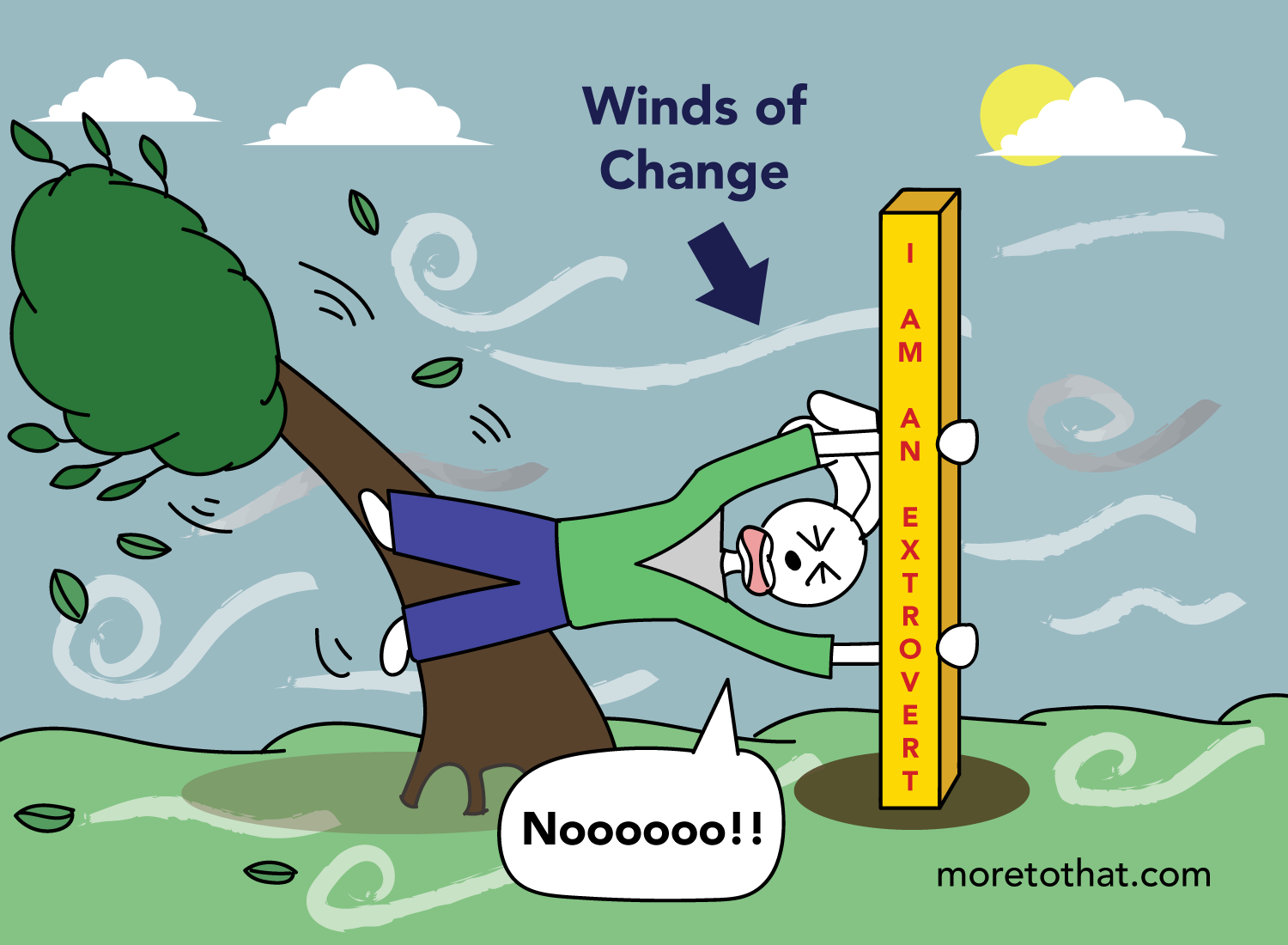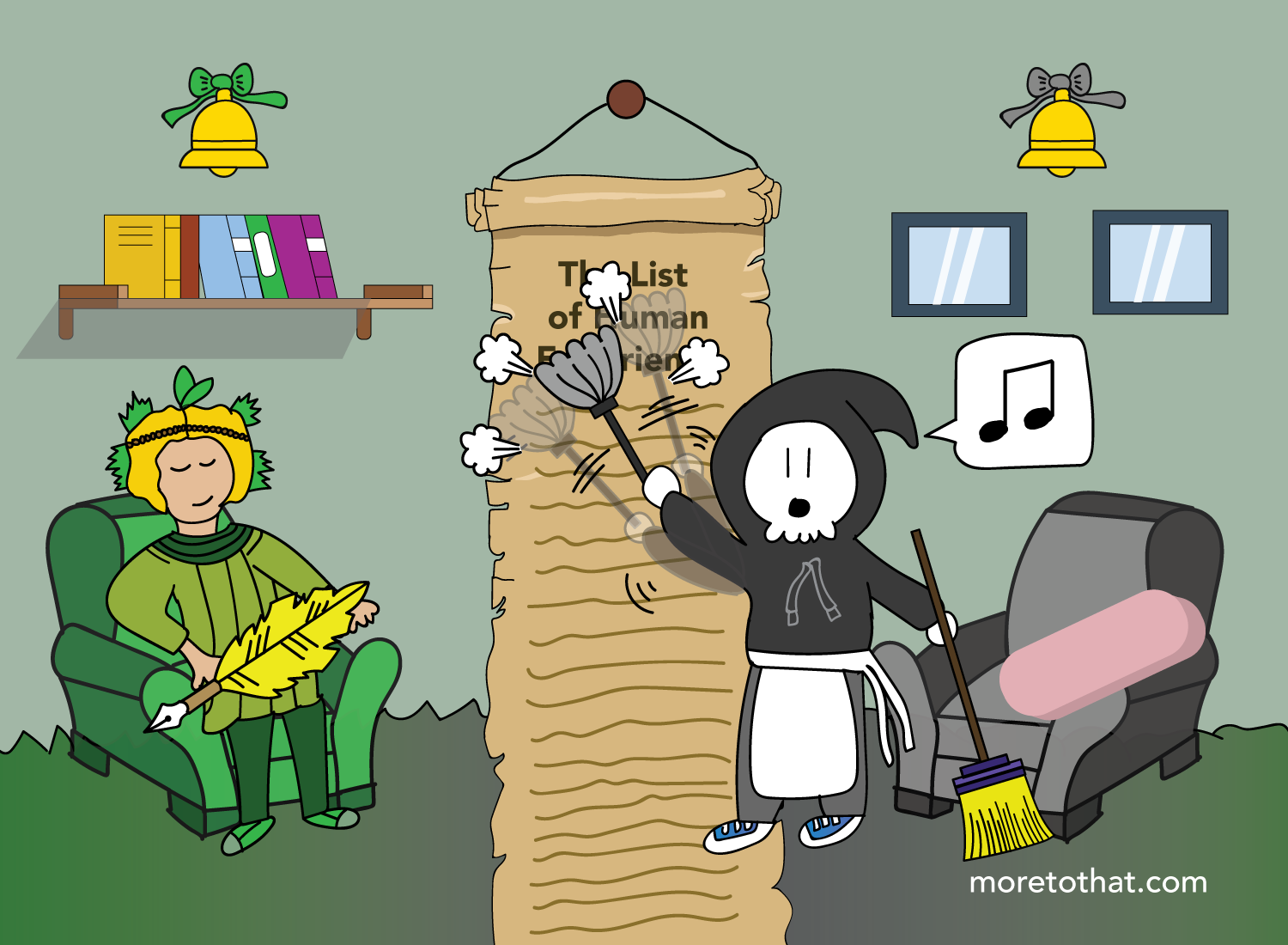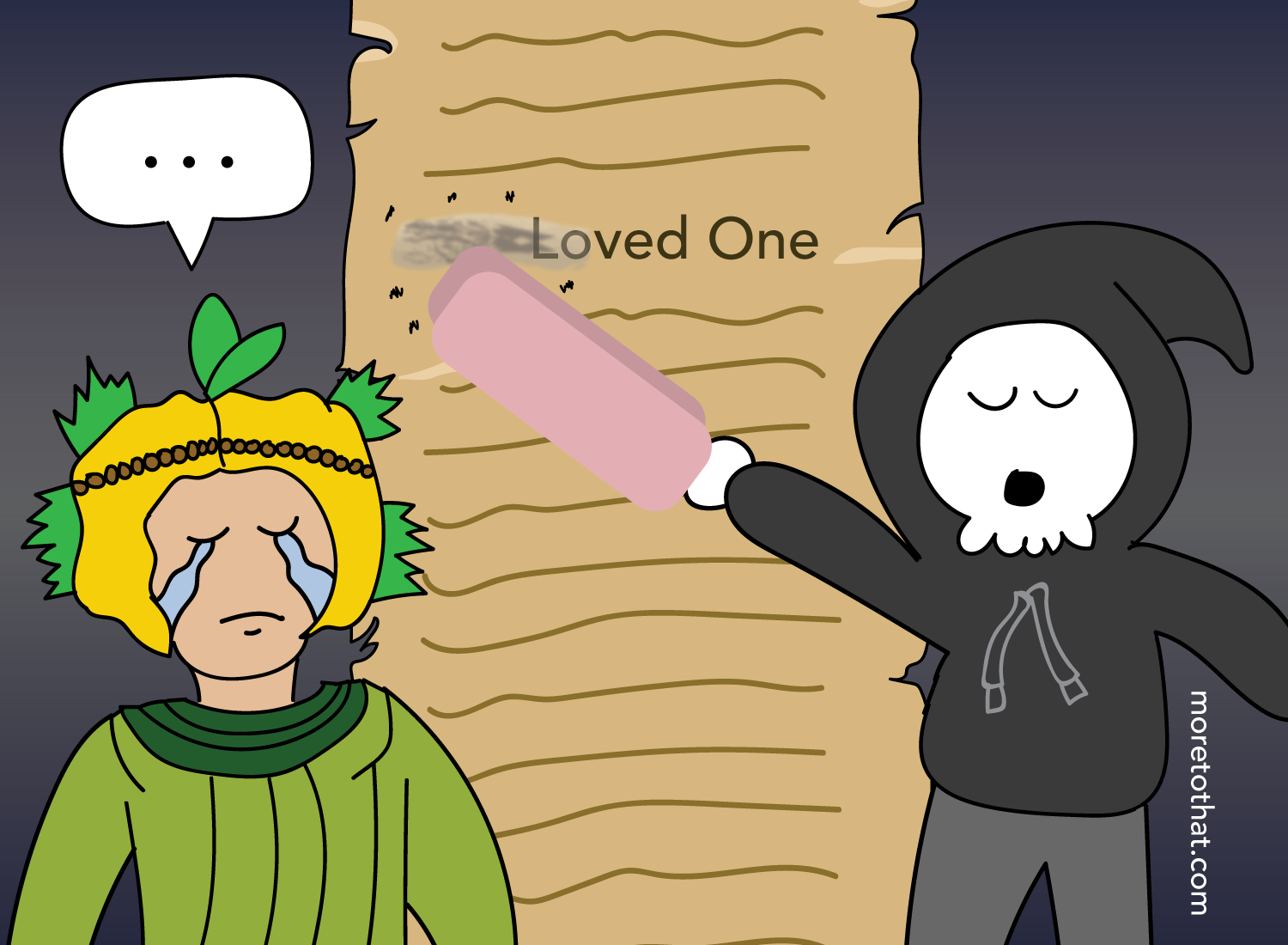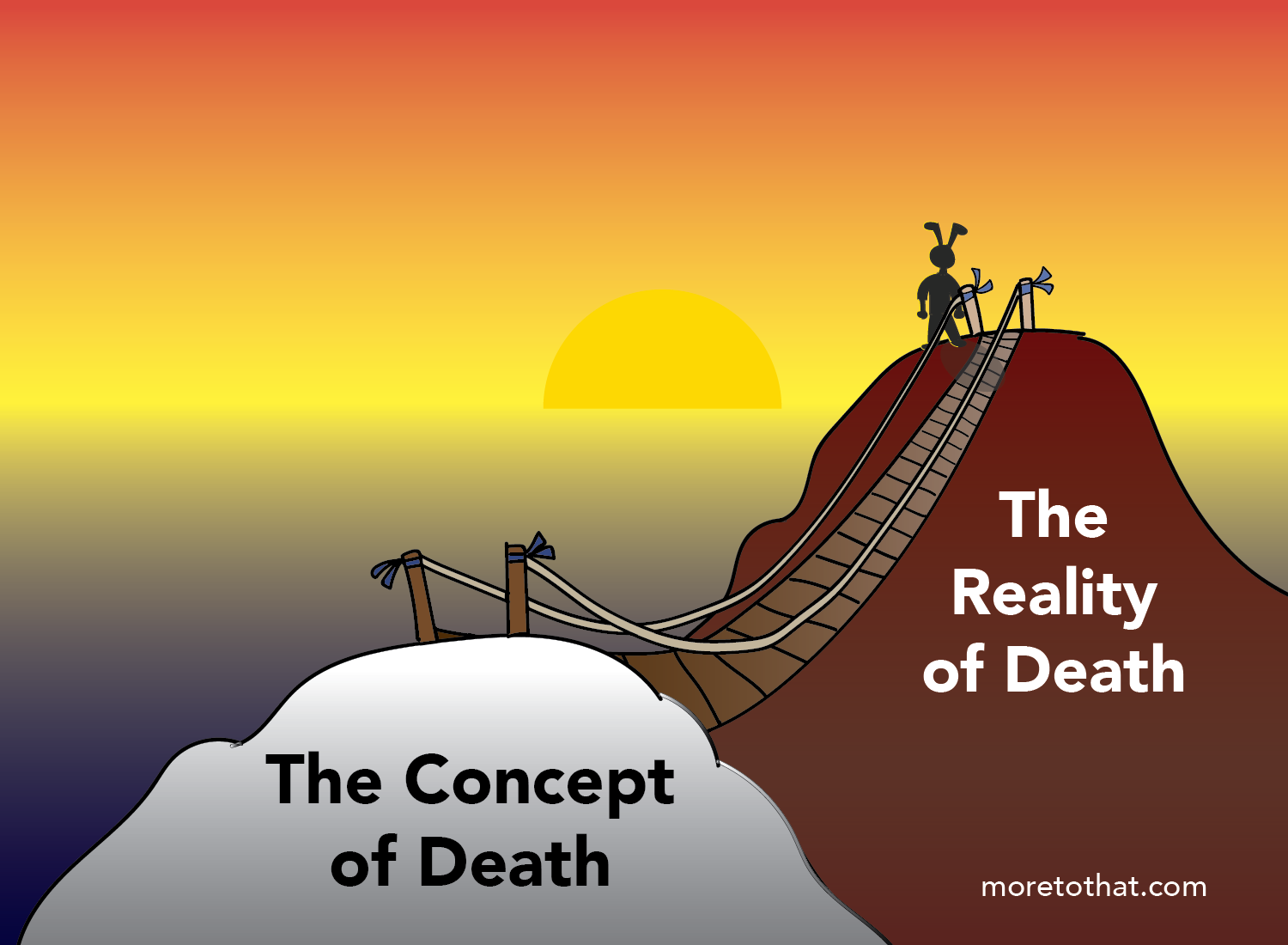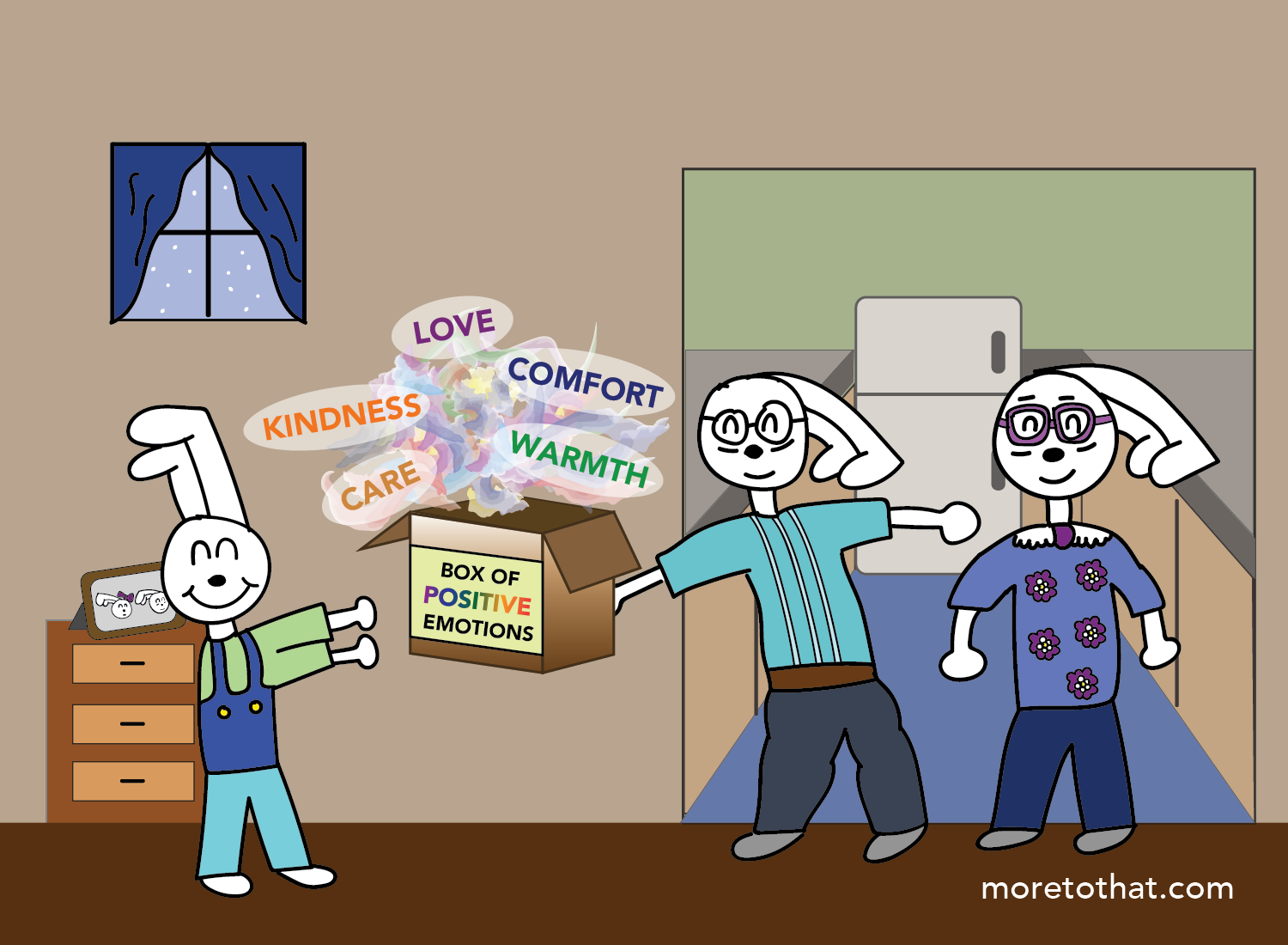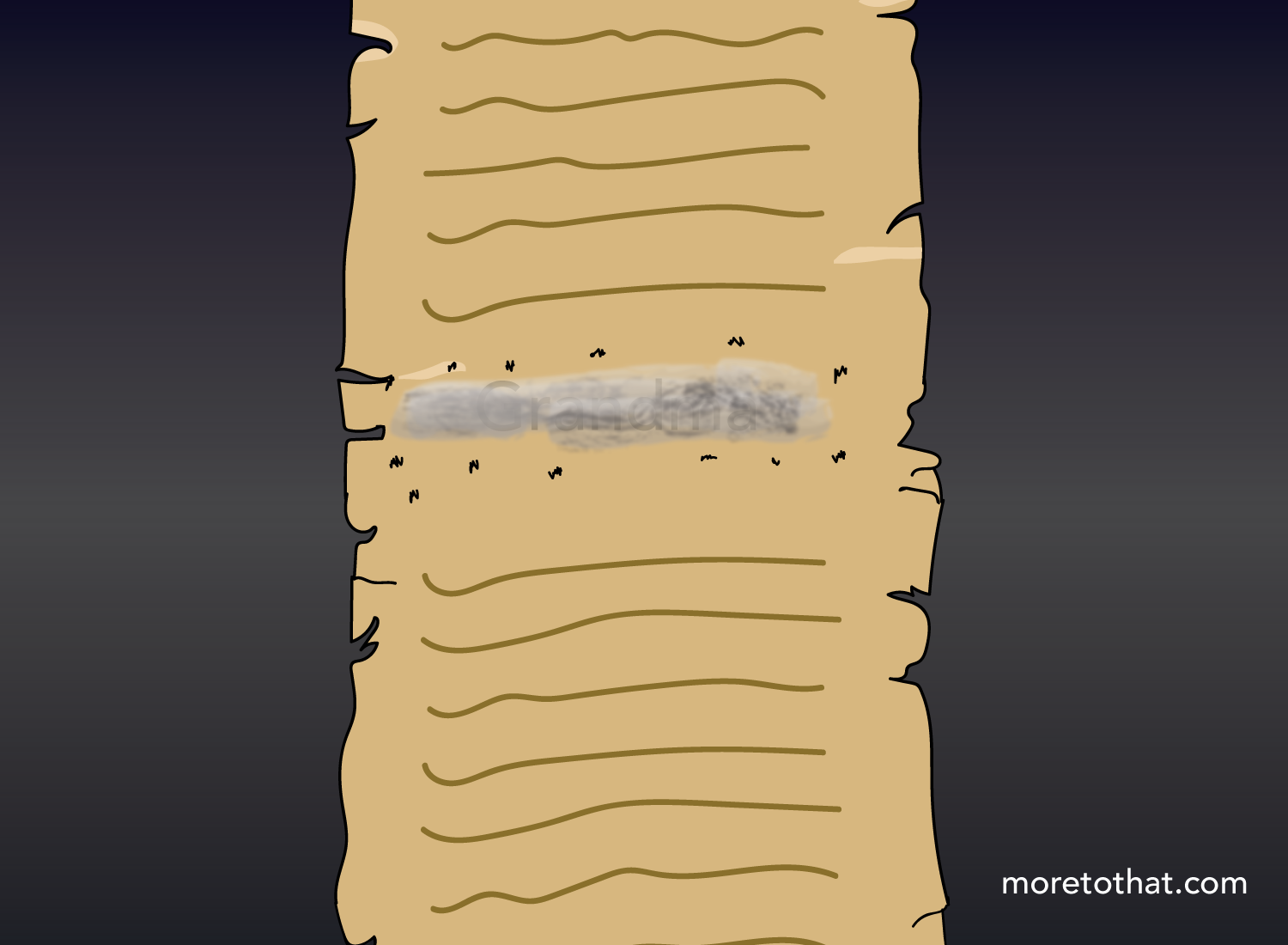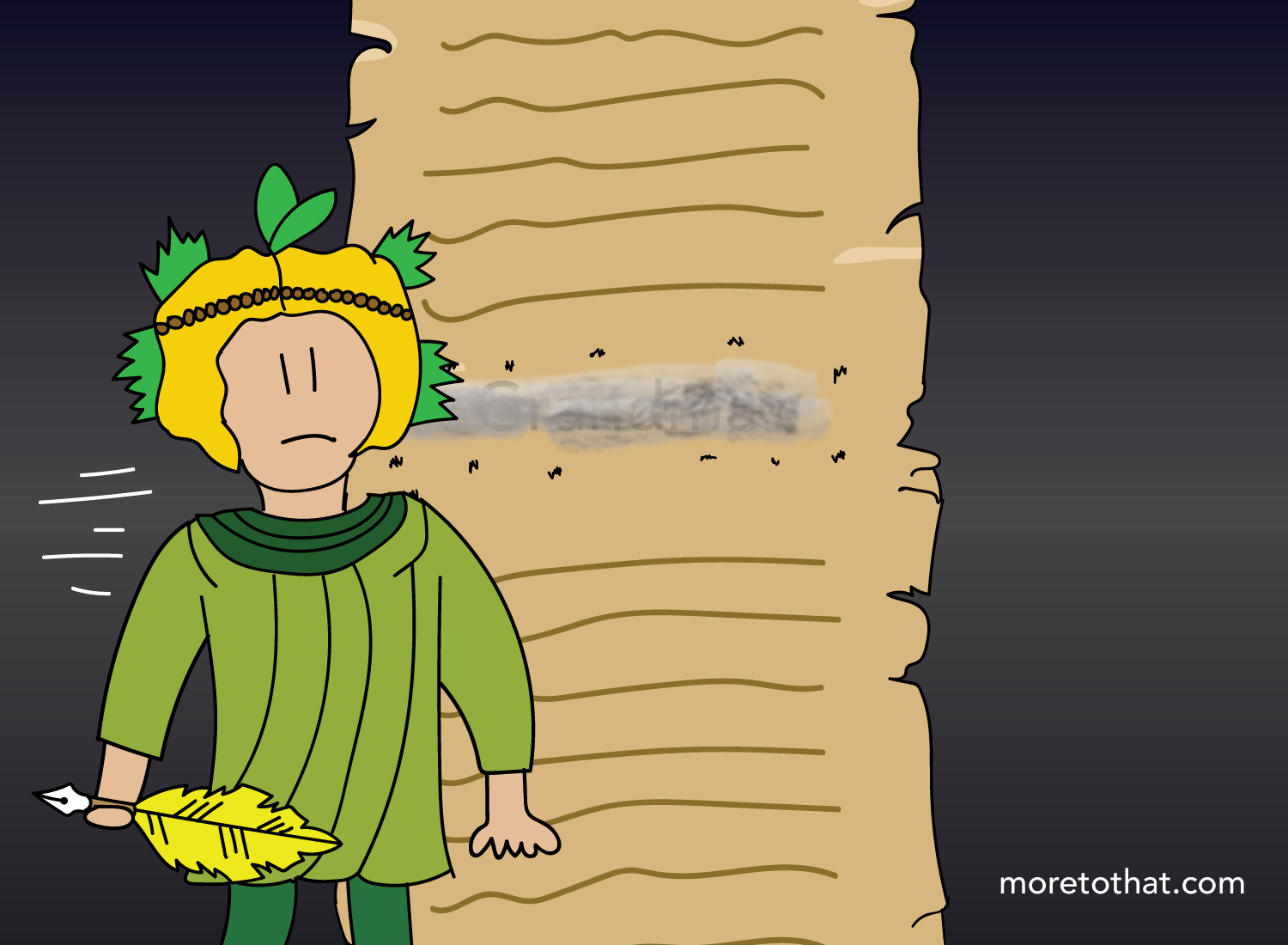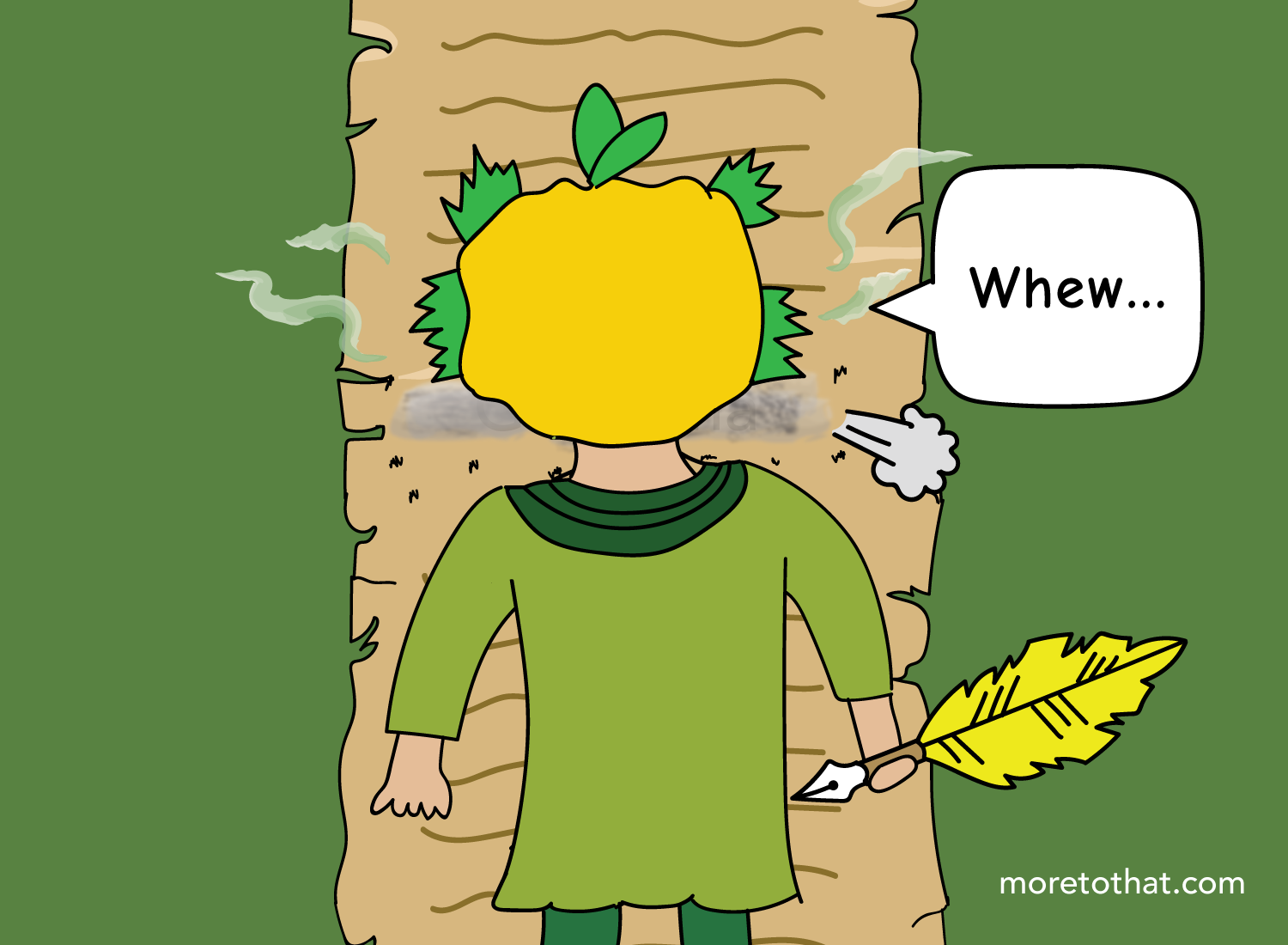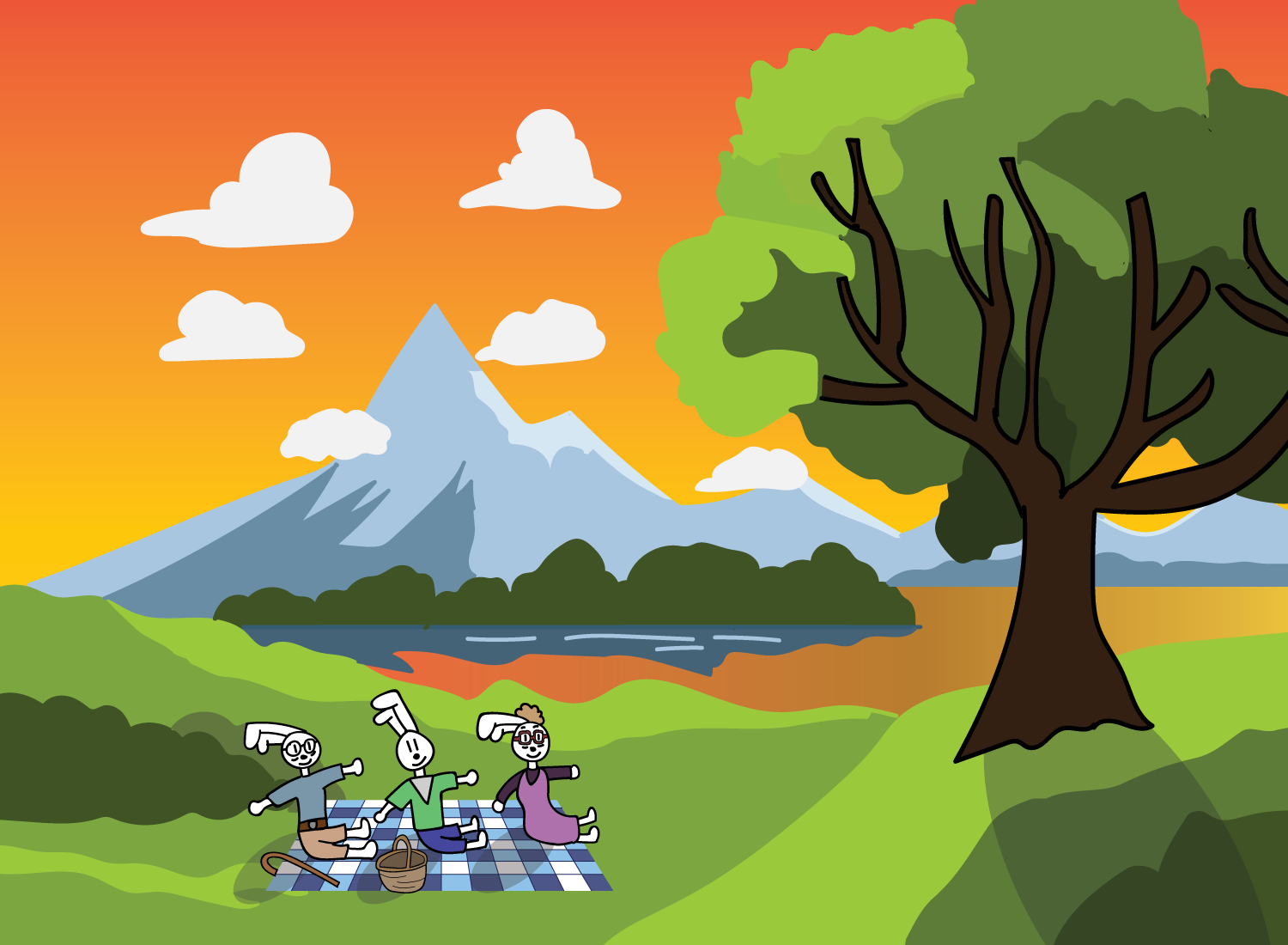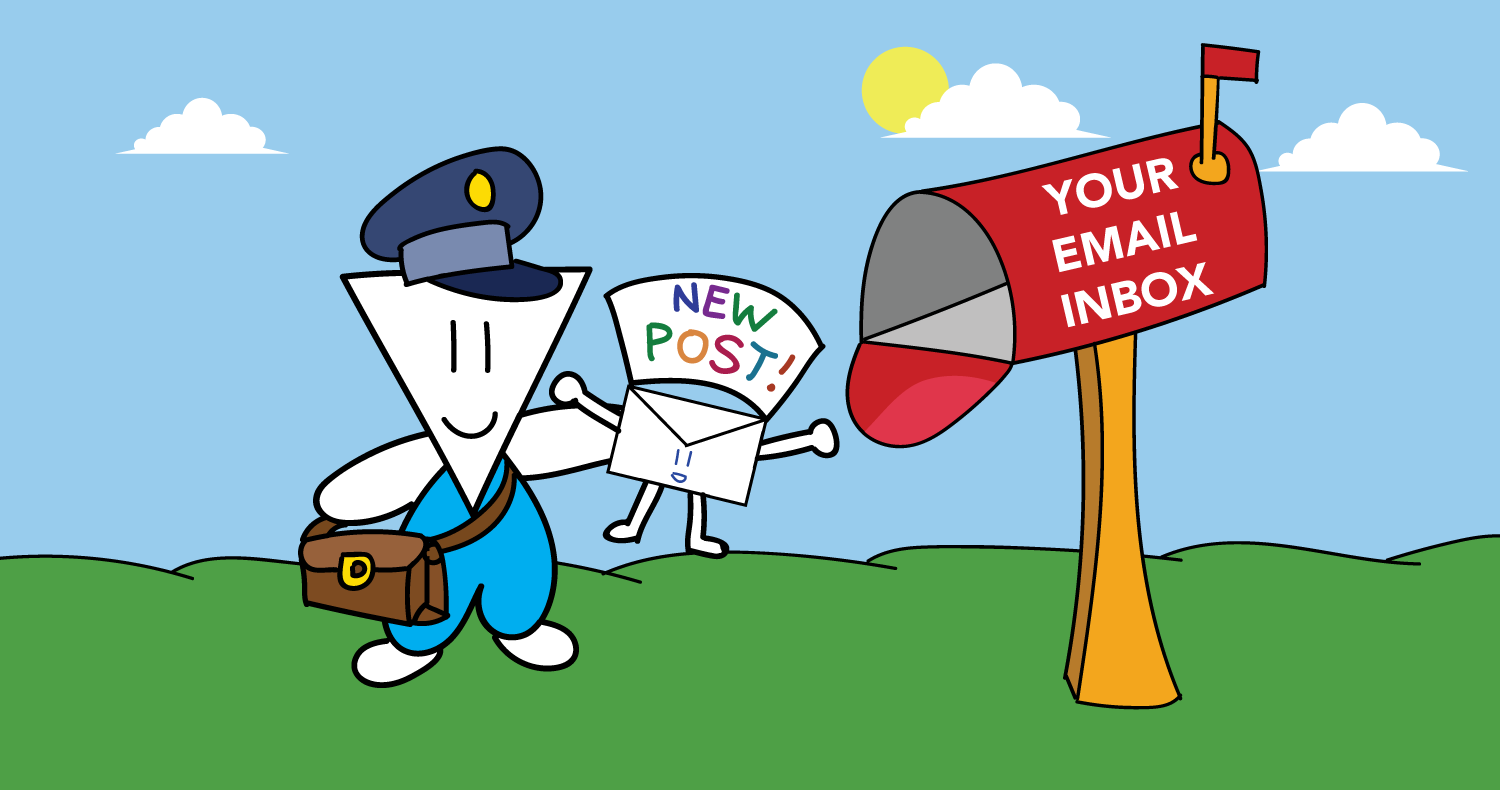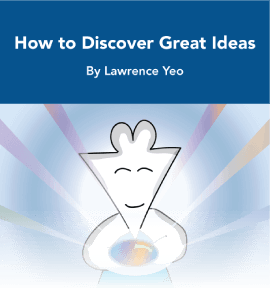Death: The Roommate of Life
Long before you knew of your own identity, you were some of this:
And some of this:
These weird things came together at some point, and you became this:
And after months of living in your mother’s womb, you were birthed into existence and became a resident of this world:
You were given this precious thing called life, which comes with a lot of great benefits. And as you grew older, you became aware of what some of these things were.
For example, you discovered that food could be quite delicious.
You found out that watching awesome TV shows made you feel really good.
You became aware of the beauty of nature and its stunning qualities:
You also discovered that love came in many forms, but romantic love in particular felt quite nice.
…But you also discovered things about life that weren’t that pleasant.
You found out about heartbreak, and how painful that could feel.
You learned about global warming, and all the ways in which it could destroy this world:
You also found out about terrible TV shows, and how crappy they can make you feel while watching them.
And sadly, you also found out that some foods are dangerous, and can leave you toilet-ridden for a few days.
These ranges of experiences, whether good or bad, are all a part of this very existence that we have been gifted.
There are many ways people define the existence of a human life. Some say that it has to do with the vitality of your physical body and the presence of a working heart. Some say that it has nothing to do with the physical body and has everything to do with consciousness instead. Some even say that it starts when you decide to believe in a certain religion or faith.
For me, I think that the existence of life has everything to do with this thing instead:
This is The List of Human Experience, and every one of us has our own version of it. I see it as the ledger of our individual existence — the master document that tracks every range of potential experience we can have at any given moment.
As complicated as it may seem, there are only two editors of this document.
Let’s start with the first one — her name is Life.
Life’s sole responsibility is to add new ranges of potential experiences that are plausible to this list. This is no easy task, as the list of items on here grows astronomically simply by you being born into this world.
For example, if you were fortunate enough to be born without any major birth defects and had access to all of your senses, Life would be really, really busy recording in a couple initial things from the get-go:
And if you were to expand any one of those categories, there would be a whole slew of categorized experiences under each of them as well:
When you are an infant, Life is writing furiously — the developments in your life are happening so fast that the range of potential experiences expands exponentially.
Life can barely keep up with all the additions.
I think this has something to do with our innate adoration for children. The potential for what kids can become are endless, and it secretly reminds us of the times when we were constantly learning about new things, discovering new facts about the world in wonderment, and exponentially growing our own lists as well.
Each experience we have, whether good or bad, is recorded into this list by Life. Depending on the lifestyle we lead, the pace of these additions can be faster or slower, and continue to occur well into adulthood.
However, this list doesn’t consistently grow in one direction. At various points in life, things occur where we have to remove certain items from The List of Human Experience, either temporarily or permanently.
Here is where we can introduce the second editor of our list.
Say hi to Death.
When you ask someone what they fear most about existence, this guy is often pointed to as the culprit.
Death’s sole responsibility as an editor is to remove the items that Life has written down that are no longer applicable or possible. You can think of Life as the additive editor, and Death as the subtractive one.
And when it comes to Death, the thing we fear most is that he will undo all the progress that Life has made in one fell swoop.
We may not consciously realize it, but the presence of Death’s editing abilities guides much of what we do today.
We schedule routine doctor’s appointments to ensure that he is at bay:
We put seat belts on as an act of insurance against a possible visit:
We exercise and adjust our eating habits so we can keep him away from Life’s work:
Much of the choices we make on a daily basis are an effort to keep Life focused on growing our list and to keep Death from doing any work at all.
But in reality, the very existence of Death also propels us to do some of the most meaningful things that Life has to offer.
Contemplating the shortness of life keeps us grounded in pursuing the goals that matter to us now rather than later.
Being mindful of our limited time in this world prevents us from spending our energy on all the wrong things.
Understanding that we will one day see our families for the final time reminds us of how precious our moments with them truly are.
The reality is that Life and Death do not live in separate parts of your universe. They are close roommates sharing space in the residence of your life.
While this thought may be nice for some, it can be discomforting for others. Knowing of Death’s presence can motivate us to do great things, but many of us would prefer not to think about the fact that we could die at any moment. As editors of our List of Human Experience, there’s something scary about the thought that Life writes with a pen and Death removes with a scythe.
Well, this is where I think the greatest misconception of death resides.
We tend to think of death as a life-eliminating event rather than a life-editing process. Instead of thinking of it as a subtractive tool necessary for growth, we believe it to be a definitive event that ends everything.
The misconception we have is that Death works with a scythe.
But in reality, he works with a different tool…
…An eraser.
While Life is responsible for adding potential ranges of experiences to your list, it doesn’t have the ability to remove the things that no longer serve you. This is where Death comes in. He is present at almost every stage, removing certain experiences and parts of yourself that were once so intricately tied to your identity.
Here are some questions to ponder:
How many of your friends from elementary school are your friends now? What would it be like if you were to hang out with the high school version of yourself today?
Does money mean the same thing to you now as it did when you first graduated college? What about relationships?
Are the things that were important to you a few years ago important to you now? Are you even the same person today as you were yesterday?
When you take the time to ponder those questions, you quickly realize how much of your life has changed over time. Sometimes it feels like you’re fundamentally living a whole new existence. And these changes don’t happen because Life simply jots down these new perspectives and adds them to your list. They happen because Death actively removes the ones that are no longer a part of you.
Perhaps the coolest thing about Life and Death is the active communication they have with one another to create balance in the List of Human Experience. When Death erases a particular experience, he gives Life an opportunity to add in a new perspective to substitute it.
For example, this is what a break-up of an unhealthy relationship may look like:
This careful interplay between Life and Death is what allows us to grow as people. Death can take away the parts of us that no longer serve us, and Life adds valuable insight into what it means to lose that part of ourselves.
The hard thing though is that we are inherently resistant to loss, especially when it comes to our qualities. We have this unhealthy obsession with self-identity, or this notion that there are certain core qualities that make us who we are. We subscribe to this belief that there are certain qualities that define our existence, and that these are unchangeable.
An example of your “core identity” can look something like this:
As time goes on, what if you start noticing that you don’t like being with large groups of people anymore? And when you are, what if you are more to yourself and would rather be back home instead? What if you’re unsure of where your career is going? What would your friends and family think? What will you do then?
When the core tenets of your self-identity are threatened, our first instinct is to fight back and hold onto them at all costs. After all, they’re what you built your relationships and reputation on, so you may be scared that this will lead to aimless isolation.
Well, this is where the reframing of Death is especially helpful.
When you are mindful of the close interaction between Life and Death, these very moments will reveal themselves to be great moments of pause and reflection. Death’s act of editing your identity is Life’s opportunity to bring forth novel perspectives.
If Death is removing your tendency to be well-liked, perhaps Life is telling you that it’s time for you to look inward and ask yourself some serious questions you’ve been ignoring for quite some time. Or conversely, if Death is poking around at your desire to be alone, perhaps Life is pushing you to meet with others and share the thoughts that have been tumbling around in your head.
This constant addition and subtraction of experiences can keep us mindful that we are in a continual state of fluidity. There is no set list of qualities that define who we are, so there is no reason to panic if you feel a shift occurring.
We all live multiple lives in one, and our sense of self continuously dies in the process. So when you feel some fundamental changes occurring within you (i.e. feeling disconnected from certain friends, being discontent with a job you’ve historically enjoyed, questioning your faith, etc.), don’t be too afraid.
That’s just Death doing some housekeeping so that Life has space to make her revelations known.
While we’ve been discussing Death’s great abilities to dissipate the illusion of self-identity, not everything is so nice and rosy. His eraser has the power to remove the things we really need removed, but other times, he touches the parts of our list that we desperately don’t want him to touch.
Sometimes we are reminded that he also has the ability to hurt us deeply.
And this pain stings the hardest when Death removes our experiences in the form of our loved ones.
There seems to be no proper way to bridge the emotional gap between a loved one’s existence and a loved one’s death. Even families that are fully aware of when their loved one will pass still cannot prepare themselves for when it actually happens.
This chasm between death as a concept and death in its real form is one of the most difficult spaces we have to navigate. While the former can motivate us to live our lives fully, the latter can devastate us and introduce unmanageable levels of grief.
However, when I speak with people that have lost loved ones to death, I get the sense that they are able to do something that only someone in their position can. Given enough time, they are able to build a bridge between the two sides, and reconcile the sad passing of their loved one with a visceral lesson of what it means to live fully.
I hear this especially from my friends who have lost their grandparents. When they reflect on the time they spent with these wonderful men and women, it almost always comes down to some combination of these emotions: love, comfort, warmth, care, and kindness. It’s as if these emotions were packaged and given to them by their grandparents themselves, allowing my friends to access them whenever their hearts desired.
The texture of unconditional warmth remains with us well after its source is no longer here. And for those of us that have had the privilege to experience that comfort, the death of a loved one can act as a lasting reminder that we have the ability to provide these emotions to others as well.
While the passing of a loved one is difficult to bear, remember that Life is on the other side, patiently waiting to teach us what it all means. It is this very lesson that keeps us grounded in this ever-changing landscape of our collective existence.
While performing a deep dive on death can seem like a difficult thing to do, I’ve found that contemplating death in this manner actually teaches us what it means to live a fuller life. There are many perspectives that can be shared here, but I think the key takeaways are the following:
(1) Remember that Life and Death live on the same side of the same coin. Death is not idly waiting for us at the end of our journeys—no, it is always with us in the lives we lead now. Being acutely aware of this allows us to reflect on what really matters, and keeps us open to the new perspectives that Life has in store for us.
(2) Self-identity is impermanent, so embrace the changes as they come. Nothing is immune to Death’s eraser, so there is no point in desperately holding onto some illusory version of yourself. Loosening the grip you have on your identity can lessen the fear and anxiety that typically accompany the winds of change.
(3) The lessons of death can be learned now. We don’t need to wait until our Lists of Human Experience are blank to embrace the wisdom of death. We have this precise moment to work on the things that give us meaning, to embrace this existence we’ve been gifted, and to tell the people we love most that we love them.
Death illuminates the fact that this very moment is all we really have in this life.
So let’s make the most out of the one we have now.
_______________
